Fiordland National Park
New Zealand
May 31
May 31
Southwestern corner of New Zealand
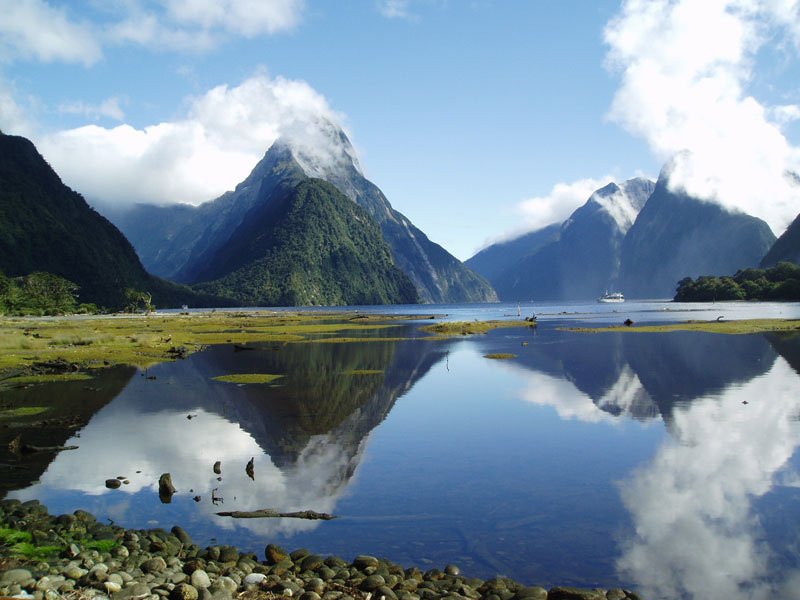
Milford Sound, Fiordland National Park
New Zealand is a young country which due to its remoteness was only first inhabited by man between 1250 and 1300 CE. At that time New Zealand was a land of untamed and untouched forests, beaches and mountains. The national parks of New Zealand are the true gems of the country, exhibiting and preserving the natural heritage of the land, the wildlife and the rich variety of landscapes. On May 31, Munduslingua takes you on a trip to New Zealand to visit Fiordland National Park and explore one of the most diverse and breathtaking places in the country.
Fiordland National Park occupies the southwestern corner of New Zealand. Established in 1952, the park is the largest of the 14 national parks of the island with over 1.2 million hectares.
Fiordland National Park forms a great part of the Te Wāhipounamu (Māori for "the place of greenstone") World Heritage Site, an area believed to host the best modern representations of flora and fauna in the ancient supercontinent of Gondwana (510 to 180 million years ago). This beautiful park encompasses a wide range of rainforests, mountains, lakes and fjords (long narrow strips of sea between high cliffs).
Within the diverse habitats of the park, one encounters a high rate of flora and fauna developing in relative isolation. This has resulted in a high rate of endemic species and in some cases in the evolution of species only to be found in the area. This hallmark makes of the park an attractive place for getting in touch with unique examples of plant and animal life.
One of these endemic species is the Takahē, a bird that developed to be much larger and flightless compared to its distant cousins in the rails family. For a long time, this unique species was believed to be extinct only until it was rediscovered in the mountains of Fiordland in 1948. Other endemic species include the world's only flightless parrot, the Kakapo. Due to their important contribution to the region's fauna, both species are part of a recovery program managed by the Department of Conservation.
Moreover the region shows very little intervention by man. Traces of early Māori (indigenous Polynesian people of New Zealand) are to be found, telling us that the area was a place for hunting, catching fish from the sea and collecting gounamu (New Zealand jade) from the rivers. Much later, European settlers who came to catch whales and seals took shelter in the fjords and built settlements in some few places. Despite these interventions and due to the region's isolation and the fact that it displays the wettest climate in New Zealand, the region was never extensively touched by men and conserves its original splendor.
Nowadays visitors can be thrilled by going on a journey to Milford Sound (a fjord acclaimed as New Zealand's most famous tourist destination) or embark themselves on a 2-4 day Great Walk to experience the spectacular area. Tourists can also engage in many other activities such as boating, kayaking, fishing, hunting, mountain biking, climbing, dog walking and diving and snorkeling. All in all, Fiordland National Park blends the best of nature with outdoor activities, a sensational place in New Zealand that is a gem to the country and a cherished corner of the world.
Fiordland National Park occupies the southwestern corner of New Zealand. Established in 1952, the park is the largest of the 14 national parks of the island with over 1.2 million hectares.
Fiordland National Park forms a great part of the Te Wāhipounamu (Māori for "the place of greenstone") World Heritage Site, an area believed to host the best modern representations of flora and fauna in the ancient supercontinent of Gondwana (510 to 180 million years ago). This beautiful park encompasses a wide range of rainforests, mountains, lakes and fjords (long narrow strips of sea between high cliffs).
Within the diverse habitats of the park, one encounters a high rate of flora and fauna developing in relative isolation. This has resulted in a high rate of endemic species and in some cases in the evolution of species only to be found in the area. This hallmark makes of the park an attractive place for getting in touch with unique examples of plant and animal life.
One of these endemic species is the Takahē, a bird that developed to be much larger and flightless compared to its distant cousins in the rails family. For a long time, this unique species was believed to be extinct only until it was rediscovered in the mountains of Fiordland in 1948. Other endemic species include the world's only flightless parrot, the Kakapo. Due to their important contribution to the region's fauna, both species are part of a recovery program managed by the Department of Conservation.
Moreover the region shows very little intervention by man. Traces of early Māori (indigenous Polynesian people of New Zealand) are to be found, telling us that the area was a place for hunting, catching fish from the sea and collecting gounamu (New Zealand jade) from the rivers. Much later, European settlers who came to catch whales and seals took shelter in the fjords and built settlements in some few places. Despite these interventions and due to the region's isolation and the fact that it displays the wettest climate in New Zealand, the region was never extensively touched by men and conserves its original splendor.
Nowadays visitors can be thrilled by going on a journey to Milford Sound (a fjord acclaimed as New Zealand's most famous tourist destination) or embark themselves on a 2-4 day Great Walk to experience the spectacular area. Tourists can also engage in many other activities such as boating, kayaking, fishing, hunting, mountain biking, climbing, dog walking and diving and snorkeling. All in all, Fiordland National Park blends the best of nature with outdoor activities, a sensational place in New Zealand that is a gem to the country and a cherished corner of the world.
A journey to Milford Sound
Anguilla Day
Anguilla
May 30
May 30
Nationwide
Beaches, ocean, streets and squares
Beaches, ocean, streets and squares
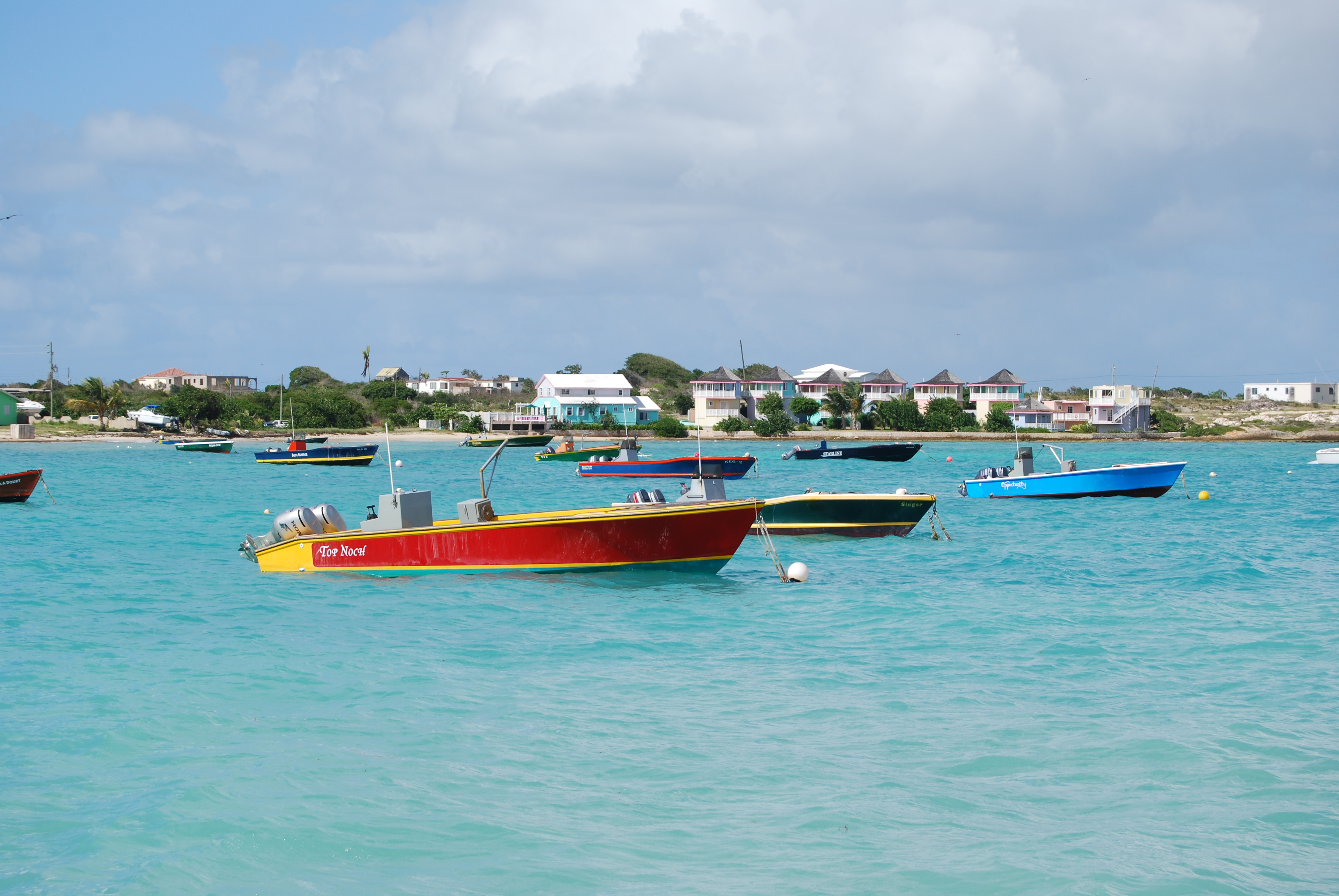
Anguilla Island Harbour
May 30 is Anguilla Day on the Caribbean island of Anguilla. This date, observed yearly on May 30, commemorates the beginning of the Anguillian Revolution in 1967, a revolution that eventually led to Anguilla's full independence in December 19, 1980. Today Munduslingua invites you to have a look at the events that are remembered during May 30 and to discover the fascinating activities that are held on this day.
The history of Anguilla Day takes us back to 1967 when the island of Anguilla achieved its independence from the associated statehood of St. Christopher-Nevis-Anguilla, which had been formed by the British Parliament in February 1967. In that year, although the newly formed statehood had its own constitution and a good degree of self-governance, Anguilla still remained at a continuous political subservience to St. Christopher Island (aka as St. Kitts).
On May 30, 1967 the people of Anguilla decided to end their subservience to St. Kitts and began a revolution by marching on the Police Headquarters, seat of the St. Kitts police on Anguilla. The revolution forced the St. Kitts police to leave the island and with it Anguilla dissociated from the union.
Although this day is of great importance for Anguillians, it was only until December 19, 1980 that Anguilla formally disassociated from the federation of St. Kitts and Nevis. For this reason, May 30 is considered to be the "spark that ignited the island's freedom."
Anguilla Day is probably one of the best times of the year to visit the island. It is a day where both visitors and Anguillians take the time to enjoy the celebrations and participate in different activities. The best way to catch a glimpse of all the celebrations is to start early. The day kicks off at 8 am with the Anguilla Day Parade when contagious happiness permeates it all.
Between 9 and 9:30 the boats of the Round-the-island race, one of Anguilla's most exciting races, take off. As the ships typically return at about 4 pm, there is plenty of time for swimming, lounging and having lunch. At around 4 pm you can join the crowds as the boats return to their starting point. This is one of the best times of the day due to the excitement of the people as the boats approach, the sound of playing bands intensifying the ambience and the smell of delicious barbecues permeating the air.
The history of Anguilla Day takes us back to 1967 when the island of Anguilla achieved its independence from the associated statehood of St. Christopher-Nevis-Anguilla, which had been formed by the British Parliament in February 1967. In that year, although the newly formed statehood had its own constitution and a good degree of self-governance, Anguilla still remained at a continuous political subservience to St. Christopher Island (aka as St. Kitts).
On May 30, 1967 the people of Anguilla decided to end their subservience to St. Kitts and began a revolution by marching on the Police Headquarters, seat of the St. Kitts police on Anguilla. The revolution forced the St. Kitts police to leave the island and with it Anguilla dissociated from the union.
Although this day is of great importance for Anguillians, it was only until December 19, 1980 that Anguilla formally disassociated from the federation of St. Kitts and Nevis. For this reason, May 30 is considered to be the "spark that ignited the island's freedom."
Anguilla Day is probably one of the best times of the year to visit the island. It is a day where both visitors and Anguillians take the time to enjoy the celebrations and participate in different activities. The best way to catch a glimpse of all the celebrations is to start early. The day kicks off at 8 am with the Anguilla Day Parade when contagious happiness permeates it all.
Between 9 and 9:30 the boats of the Round-the-island race, one of Anguilla's most exciting races, take off. As the ships typically return at about 4 pm, there is plenty of time for swimming, lounging and having lunch. At around 4 pm you can join the crowds as the boats return to their starting point. This is one of the best times of the day due to the excitement of the people as the boats approach, the sound of playing bands intensifying the ambience and the smell of delicious barbecues permeating the air.
Anguilla Day Parade in 2010
Democracy Day
Nigeria
May 29
May 29
Nationwide
Local communities
Local communities
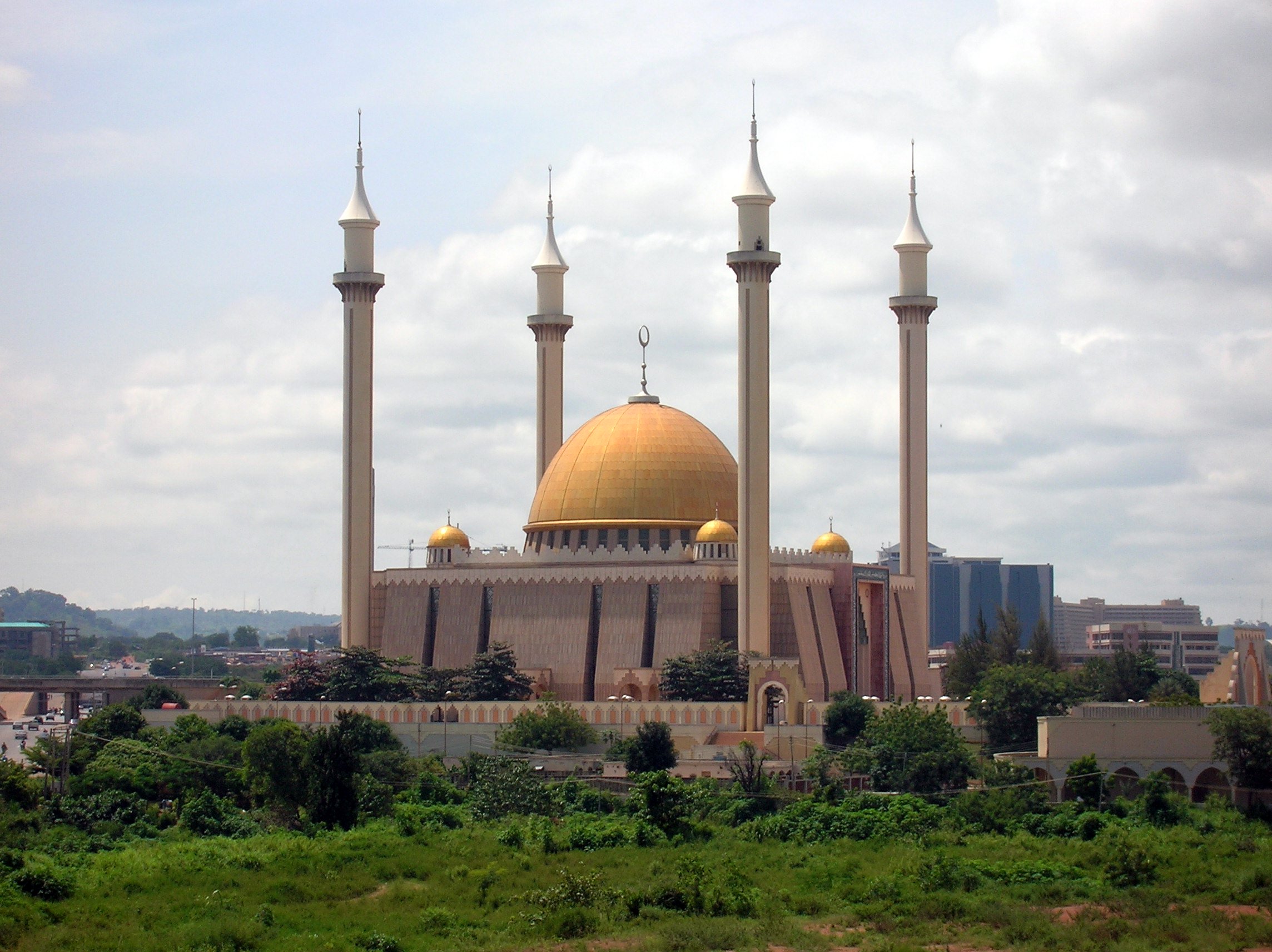
Abuja Nationa Mosque
More than a decade ago, Olusegun Obasanjo, a former Nigerian Army general, was elected the 12th president of Nigeria. Ever since the date has become a public holiday observed annually on May 29 as the return of democracy to the country after 16 years of military rule. During Democracy Day in Nigeria, Munduslingua takes you to explore Nigeria's capital city, Abuja, the Jewel of Africa, and learn how this city is taking important steps towards the vision of a first class and inclusive city.
Abuja, Nigeria's capital and the first African made capital city, is located in the center of Nigeria at the heart of Africa. Abuja is a planned city which was conceived in 1976 and built mainly during the 1980s. The city became officially Nigeria's capital on 12 December 1991 when it replaced Lagos, the country's most populous city in the country next to the Atlantic Ocean.
Abuja blends its natural surroundings with technology and sophistication. One of its most impressive landmarks is the huge "Zuma Rock", an impressive 725-meter-tall monolith just north of the city. The beauty of this large rock, often referred to as the "Gateway to Abuja", is one of the city's main spots. This makes of Abuja a city where civilization dwells side by side with nature.
Abuja counts with architectural masterpieces which are the headquarters of local and international corporations. The tourist industry counts with first class hotels which are complemented by the hospitality of the staff and locals. Other spectacular buildings in the city are the National Mosque which includes a library and a conference room, as well as the National Christian Center.
As Nigeria's capital, Abuja serves as its seat of power, center of administration and home of the legislative and the judicial arms of government. It is also fully fitted with top class facilities which include the ultramodern National Stadium, the Nnamdi Azikiwe International Airport and a world-class Conference Center. These facilities have served in the past and continue to be used to host local and international events. Furthermore, with Nigeria playing an important role in African politics, Abuja has also served as a meeting point for conferences and peace talks.
In addition, only a breath away from the corporate and fast-paced life of any capital city, Abuja offers parks and natural resorts that have well deserved the city its fame as a place for leisure activities and relaxation. Within these we encounter the Millennium Park, The Children's Park and Zoo and the IBB International Golf & Country Club with a beautiful undulating 18-hole parkland course with streams, ponds and lakes. Moreover the Ushafa Pottery Center, the home of classical claywork, is a place to get in touch with Nigeria's art and culture.
In a nutshell, Abuja is a modern and fascinating African city that blends nature with the best of accommodation, leisure and business activities. Abuja is a city that looks towards the future of Africa and welcomes its guests with hospitality and business opportunities.
Abuja, Nigeria's capital and the first African made capital city, is located in the center of Nigeria at the heart of Africa. Abuja is a planned city which was conceived in 1976 and built mainly during the 1980s. The city became officially Nigeria's capital on 12 December 1991 when it replaced Lagos, the country's most populous city in the country next to the Atlantic Ocean.
Abuja blends its natural surroundings with technology and sophistication. One of its most impressive landmarks is the huge "Zuma Rock", an impressive 725-meter-tall monolith just north of the city. The beauty of this large rock, often referred to as the "Gateway to Abuja", is one of the city's main spots. This makes of Abuja a city where civilization dwells side by side with nature.
Abuja counts with architectural masterpieces which are the headquarters of local and international corporations. The tourist industry counts with first class hotels which are complemented by the hospitality of the staff and locals. Other spectacular buildings in the city are the National Mosque which includes a library and a conference room, as well as the National Christian Center.
As Nigeria's capital, Abuja serves as its seat of power, center of administration and home of the legislative and the judicial arms of government. It is also fully fitted with top class facilities which include the ultramodern National Stadium, the Nnamdi Azikiwe International Airport and a world-class Conference Center. These facilities have served in the past and continue to be used to host local and international events. Furthermore, with Nigeria playing an important role in African politics, Abuja has also served as a meeting point for conferences and peace talks.
In addition, only a breath away from the corporate and fast-paced life of any capital city, Abuja offers parks and natural resorts that have well deserved the city its fame as a place for leisure activities and relaxation. Within these we encounter the Millennium Park, The Children's Park and Zoo and the IBB International Golf & Country Club with a beautiful undulating 18-hole parkland course with streams, ponds and lakes. Moreover the Ushafa Pottery Center, the home of classical claywork, is a place to get in touch with Nigeria's art and culture.
In a nutshell, Abuja is a modern and fascinating African city that blends nature with the best of accommodation, leisure and business activities. Abuja is a city that looks towards the future of Africa and welcomes its guests with hospitality and business opportunities.
A trip to fabulous Abuja, Nigeria
Derg Downfall Day
Ethiopia
May 28
May 28
Nationwide
Local communities
Local communities
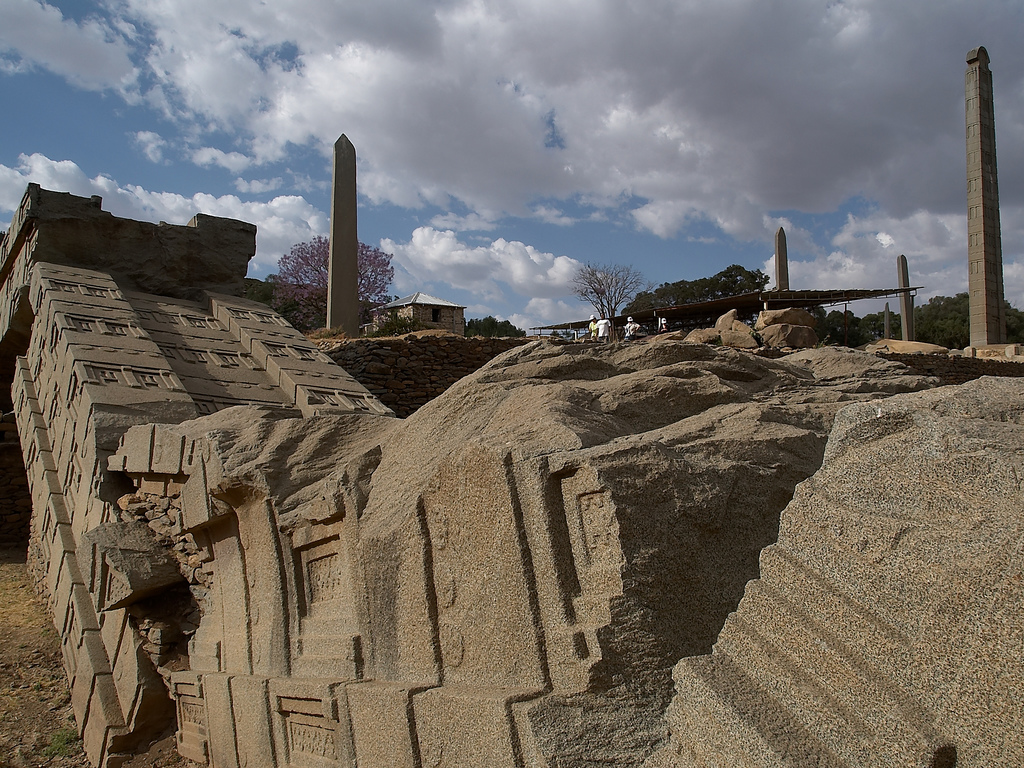
The stelae field in Axum, Ethiopia
May 28 is the National Day of Ethiopia. The date commemorates the fall of the oppressive Derg regime in 1991, a military junta which ruled the country from 1974, thus officially known as the "Derg Downfall Day". This holiday is considered to be one of Ethiopia's most important dates of the year. On this day Munduslingua travels to Axum, a city in northern Ethiopia that due to its historical and cultural value is inscribed in the list of UNESCO World Heritage Sites.
The city of Axum, aka Aksum, a city in northern Ethiopia and the capital of an old kingdom existing from c. 100 – c. 940 AD, welcomes you with its countless numbers of archeological sites.
Axum, the pride of all the Ethiopians, is located approximately 1 mile above sea level in the highlands of northern Ethiopia. These lands are the rooftop of Africa and the center of one of the greatest civilizations of the Ancient World. The Aksumite people, which existed already more than 3000 years ago, had their own written language called Ge'ez, still used nowadays by several churches in Ethiopia and Eritrea during their liturgy. The Aksumites developed also a distinctive architecture which was characterized by giant obelisks, the oldest of which date back to about 5000 - 2000 BC.
At the height of its imperial past, between the first and seventh centuries, Axum was one of the great trading centers of Africa. The Aksumites controlled a vast empire that stretched into modern-day Sudan and Saudi Arabia and traded with the ancient empires of Rome, Persia and India. Gold, emeralds and ivory were exported in exchange for silk and spices. The immense wealth of the Aksumite kings was used in part to build palaces, temples and monuments, the remains of which can still be seen today scattered among the streets and houses.
Today, the city of Axum remains an important local center for trade and craft. In addition painting is a long-standing local speciality. Axum is also the heart of Ethiopia's traditional Christian culture with thousands of churches, monasteries and holy sites.
A mix of a rich and ancient civilization, Christianity, beautiful landscapes and long-held traditions, the city of Axum is surely a destination that will both impress and enchant its visitors.
The city of Axum, aka Aksum, a city in northern Ethiopia and the capital of an old kingdom existing from c. 100 – c. 940 AD, welcomes you with its countless numbers of archeological sites.
Axum, the pride of all the Ethiopians, is located approximately 1 mile above sea level in the highlands of northern Ethiopia. These lands are the rooftop of Africa and the center of one of the greatest civilizations of the Ancient World. The Aksumite people, which existed already more than 3000 years ago, had their own written language called Ge'ez, still used nowadays by several churches in Ethiopia and Eritrea during their liturgy. The Aksumites developed also a distinctive architecture which was characterized by giant obelisks, the oldest of which date back to about 5000 - 2000 BC.
At the height of its imperial past, between the first and seventh centuries, Axum was one of the great trading centers of Africa. The Aksumites controlled a vast empire that stretched into modern-day Sudan and Saudi Arabia and traded with the ancient empires of Rome, Persia and India. Gold, emeralds and ivory were exported in exchange for silk and spices. The immense wealth of the Aksumite kings was used in part to build palaces, temples and monuments, the remains of which can still be seen today scattered among the streets and houses.
Today, the city of Axum remains an important local center for trade and craft. In addition painting is a long-standing local speciality. Axum is also the heart of Ethiopia's traditional Christian culture with thousands of churches, monasteries and holy sites.
A mix of a rich and ancient civilization, Christianity, beautiful landscapes and long-held traditions, the city of Axum is surely a destination that will both impress and enchant its visitors.
A trip to Axum, Ethiopia
First National Government
Argentina
May 25
May 25
Nationwide
Local communities
Local communities

A couple dancing Tango
The First National Government (Spanish: Primer Gobierno Patrio), celebrated annually on May 25, is a public holiday in Argentina. May 25 commemorates the historical date in 1810 when the first national government formed by locals was adopted, independent from Spanish rule. On this special day for Argentineans, Munduslingua invites you to learn more about the First National Government.
25 May 1810 marks in Argentinean history the day when the first national government was formed independent from the Spanish crown. During that time, Argentina was still not a country of its own but a Spanish colony called the Viceroyalty of the Río de la Plata (Spanish: Virreinato del Río de la Plata). As such, Argentina, just like most modern countries in South America, was a Spanish dependency with laws imposed from Spain.
In May 1810 a series of events known as "May Revolution" (Spanish: Revolución de Mayo) took place in Buenos Aires (modern-day capital of Argentina) that led to viceroy Baltasar Hidalgo de Cisneros, the royal official who ran the viceroyalty of the Río de la Plata, being removed from power. The viceroy was in return replaced by the First Assembly (Spanish: Primera Junta), the first independent government of Argentina.
During the May Revolution the process of independence from Spain was started. Argentina's independence movement ended with the Declaration of Independence on 9 July 1816 during the Congress of Tucumán.
25 May 1810 marks in Argentinean history the day when the first national government was formed independent from the Spanish crown. During that time, Argentina was still not a country of its own but a Spanish colony called the Viceroyalty of the Río de la Plata (Spanish: Virreinato del Río de la Plata). As such, Argentina, just like most modern countries in South America, was a Spanish dependency with laws imposed from Spain.
In May 1810 a series of events known as "May Revolution" (Spanish: Revolución de Mayo) took place in Buenos Aires (modern-day capital of Argentina) that led to viceroy Baltasar Hidalgo de Cisneros, the royal official who ran the viceroyalty of the Río de la Plata, being removed from power. The viceroy was in return replaced by the First Assembly (Spanish: Primera Junta), the first independent government of Argentina.
During the May Revolution the process of independence from Spain was started. Argentina's independence movement ended with the Declaration of Independence on 9 July 1816 during the Congress of Tucumán.
Bermuda Day
Bermuda
May 24
May 24
Nationwide
Beaches, streets and homes
Beaches, streets and homes
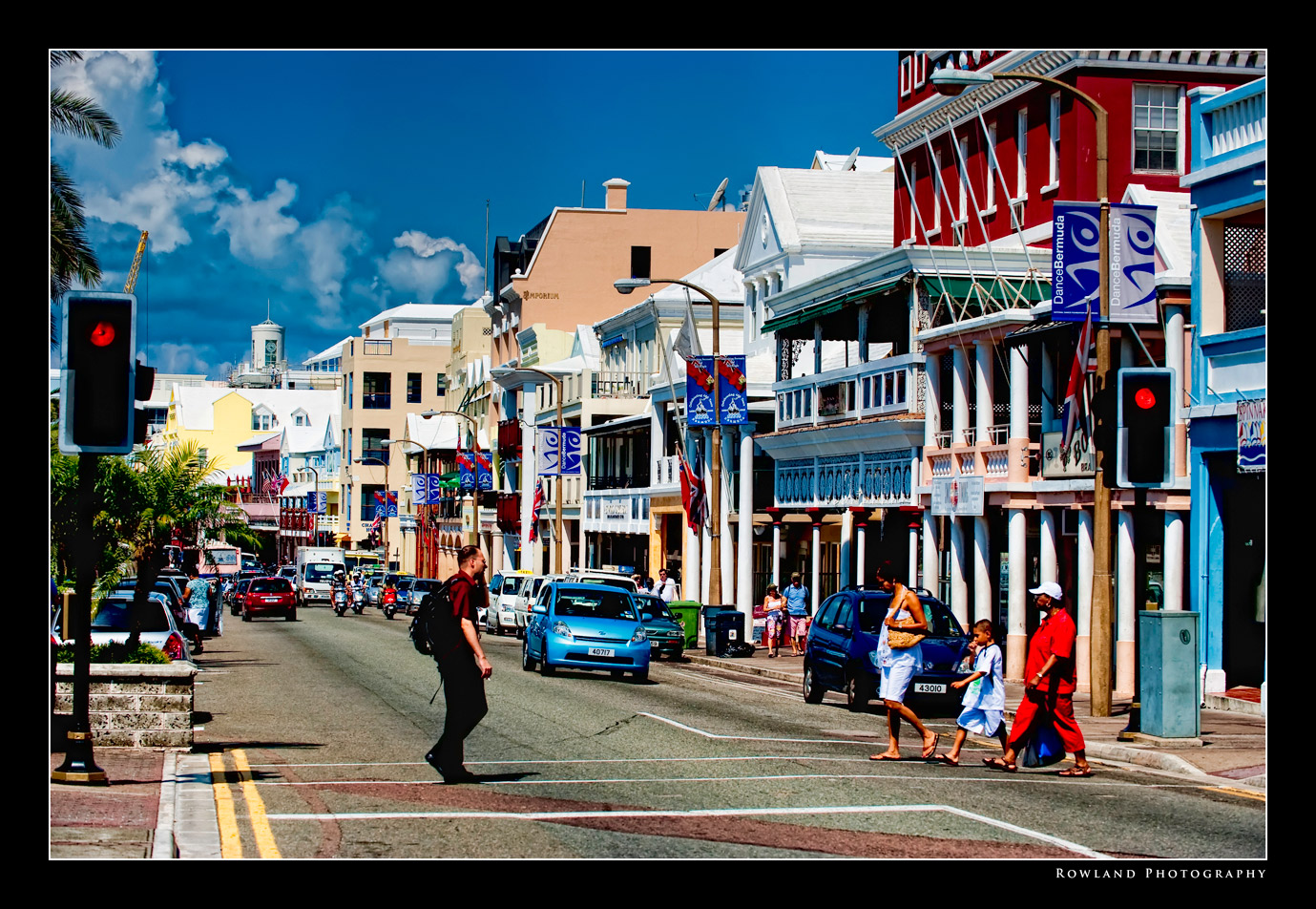
Hamilton, Bermuda
Bermuda celebrates on May 24 "Bermuda Day", a yearly event full of sporting activities, festivities and colorful parades. Expore the beautiful island of Bermuda as part of today's destination.
Bermuda Day takes place every year on May 24. This date marks the unofficial start of the summer in Bermuda, when the air and sea temperature just seem to rise a few degrees. May 24 is also a key event in Heritage Month, a time when the island residents are encouraged to reflect upon and celebrate the beliefs and traditions that make Bermuda special.
Lastly it is the full list of activities and festivities that make the day stand out. This includes a parade in Hamilton (Bermuda's capital), and a road race from the west end of the island into Hamilton. These events are very popular as spectator events, and residents are known to stake out particular sections of the streets and sidewalks to enable them to watch the runners, cyclists and roller bladers as well as the vehicles (the floats) on which people dressed in special costumes are carried during the parade.
If you are planning to visit Bermuda and want to experience one of the island's most action-packed, festive and entertaining holidays, be sure to visit Bermuda on May 24 for Bermuda Day. Learn more about this day while letting yourself be enchanted with the island's charm.
Bermuda Day takes place every year on May 24. This date marks the unofficial start of the summer in Bermuda, when the air and sea temperature just seem to rise a few degrees. May 24 is also a key event in Heritage Month, a time when the island residents are encouraged to reflect upon and celebrate the beliefs and traditions that make Bermuda special.
Lastly it is the full list of activities and festivities that make the day stand out. This includes a parade in Hamilton (Bermuda's capital), and a road race from the west end of the island into Hamilton. These events are very popular as spectator events, and residents are known to stake out particular sections of the streets and sidewalks to enable them to watch the runners, cyclists and roller bladers as well as the vehicles (the floats) on which people dressed in special costumes are carried during the parade.
If you are planning to visit Bermuda and want to experience one of the island's most action-packed, festive and entertaining holidays, be sure to visit Bermuda on May 24 for Bermuda Day. Learn more about this day while letting yourself be enchanted with the island's charm.
Bermuda and the festivities on Bermuda Day
Jamaica Labour Day
Jamaica
May 23
May 23
Nationwide
Local communities
Local communities
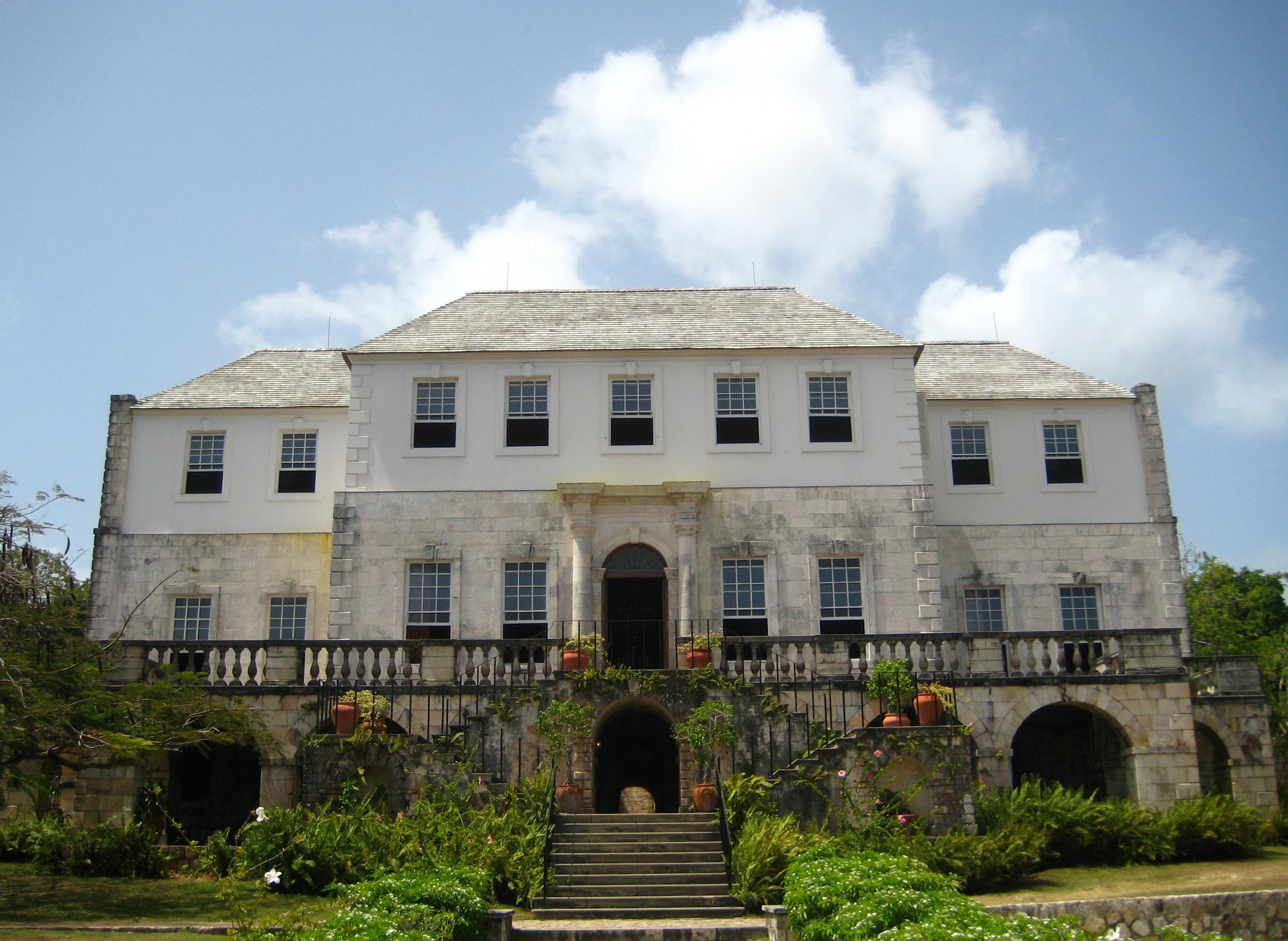
Font view of Rose Hall Great House
Jamaica celebrates on May 23rd its Labour Day, a public holiday linked with the events of 1938 when the workers of Jamaica, through protests and rebellions, secured and ensured basic rights that were long denied to them.
Jamaicans remember this day as the moment when the modern labor movement was born. This in return resulted in further developments in the social and political arena and led finally to political independence in 1962. This same year, on August 6, Jamaicans will also be celebrating fifty years of achieving full independence from Britain.
During Labour Day, Munduslingua invites you to discover Rose Hall, the most famous of the Great Houses in Jamaica and one of the island's top tourist destinations, as well as the legend of Annie Palmer, the White Witch of Rose Hall
Rose Hall Great House is a Georgian mansion located approximately 15km east of Montego Bay in northwestern Jamaica. Built in the 1770s, Rose Hall Great House sits high on a hillside with an exquisite panorama view over the coast. During the 1960s the mansion was restored to its former splendor with mahogany floors, interior windows and doorways, paneling and wooden ceilings. It is decorated with silk wallpaper printed with palms and birds, ornamented with chandeliers and furnished with mostly European antiques.
The Rose Hall Great House was named after Rosa, the wife of George Ash who was the person to set forth the plans to build a lovely mansion for his bride. Ash died in 1752 before finishing the structure. Rosa married two more times, the final marriage to John Palmer, the Custos (guard) of St. James Parish, the Parish where the Great House is located.
During the first half of the 1800s, Anee [Annie] Mary Petterson, the so-called White Witch of Rose Hall according to legend, came to live to the house. Annie, who had married in 1820 John Rose Palmer, John Palmer's grandson and owner of Rose Hall Plantation, became Annie Palmer, the slave owner, the mistress who came to own more than 2,000 slaves and 6,600 acres of land.
John Palmer and two subsequent husbands of Annie died suspiciously while still married to her. According to legend, Annie's room at Rose Hall is painted all in red because she had a passionate nature for blood. Annie was well-known for taking male slaves for pleasure and often murdering them. As a mistress of voodoo, Annie terrorized the plantation with its practice.
Killed by her own slaves, a special grave was prepared away from the great house. In this place she could be entombed to keep her from rising again. According to legend, the slaves failed to complete the ritual properly and the White Witch is said to roam the great house to this day.
Nowadays Rose Hall is still famous for the legend of the White Witch and is one of Jamaica's top tourist attractions. To end this destination, Munduslingua invites you to tour around Rose Hall and learn more about its horror legend.
Jamaicans remember this day as the moment when the modern labor movement was born. This in return resulted in further developments in the social and political arena and led finally to political independence in 1962. This same year, on August 6, Jamaicans will also be celebrating fifty years of achieving full independence from Britain.
During Labour Day, Munduslingua invites you to discover Rose Hall, the most famous of the Great Houses in Jamaica and one of the island's top tourist destinations, as well as the legend of Annie Palmer, the White Witch of Rose Hall
Rose Hall Great House is a Georgian mansion located approximately 15km east of Montego Bay in northwestern Jamaica. Built in the 1770s, Rose Hall Great House sits high on a hillside with an exquisite panorama view over the coast. During the 1960s the mansion was restored to its former splendor with mahogany floors, interior windows and doorways, paneling and wooden ceilings. It is decorated with silk wallpaper printed with palms and birds, ornamented with chandeliers and furnished with mostly European antiques.
The Rose Hall Great House was named after Rosa, the wife of George Ash who was the person to set forth the plans to build a lovely mansion for his bride. Ash died in 1752 before finishing the structure. Rosa married two more times, the final marriage to John Palmer, the Custos (guard) of St. James Parish, the Parish where the Great House is located.
During the first half of the 1800s, Anee [Annie] Mary Petterson, the so-called White Witch of Rose Hall according to legend, came to live to the house. Annie, who had married in 1820 John Rose Palmer, John Palmer's grandson and owner of Rose Hall Plantation, became Annie Palmer, the slave owner, the mistress who came to own more than 2,000 slaves and 6,600 acres of land.
John Palmer and two subsequent husbands of Annie died suspiciously while still married to her. According to legend, Annie's room at Rose Hall is painted all in red because she had a passionate nature for blood. Annie was well-known for taking male slaves for pleasure and often murdering them. As a mistress of voodoo, Annie terrorized the plantation with its practice.
Killed by her own slaves, a special grave was prepared away from the great house. In this place she could be entombed to keep her from rising again. According to legend, the slaves failed to complete the ritual properly and the White Witch is said to roam the great house to this day.
Nowadays Rose Hall is still famous for the legend of the White Witch and is one of Jamaica's top tourist attractions. To end this destination, Munduslingua invites you to tour around Rose Hall and learn more about its horror legend.
History and tour around Rose Hall Great House
National Sovereignty Day
Haiti
May 22
May 22
Nationwide
Local communities
Local communities

Haitian art
During Haiti's National Sovereignty Day, a day dedicated to the head of the state and to the nation's culture, and beyond the struggle of the country after the 2010 earthquake, Munduslingua explores a much more positive side of Haiti, one that will surely remind you that even during our biggest challenges there is always opportunity and hope.
The owners of Wahoo Bay Beach Club & Resort, in the heart of "La côte des Arcadins", the famous "Arcadins Coast" near Port-au-Prince, tell us about the country's current situation, why they believe in their country, Haiti, and how they are contributing to change the lives of the people who work at their resort.
This video is an invitation to change the negative image that you may have from Haiti and make you discover aspects of Haitian culture and people that are also present, but that the media may not be focusing on. Welcome to the truer face of Haiti, one that surely will impress you with hospitality and natural beauty.
The owners of Wahoo Bay Beach Club & Resort, in the heart of "La côte des Arcadins", the famous "Arcadins Coast" near Port-au-Prince, tell us about the country's current situation, why they believe in their country, Haiti, and how they are contributing to change the lives of the people who work at their resort.
This video is an invitation to change the negative image that you may have from Haiti and make you discover aspects of Haitian culture and people that are also present, but that the media may not be focusing on. Welcome to the truer face of Haiti, one that surely will impress you with hospitality and natural beauty.
From Haiti with love
Baka Culture
Cameroon
May 22
May 22
Baka people
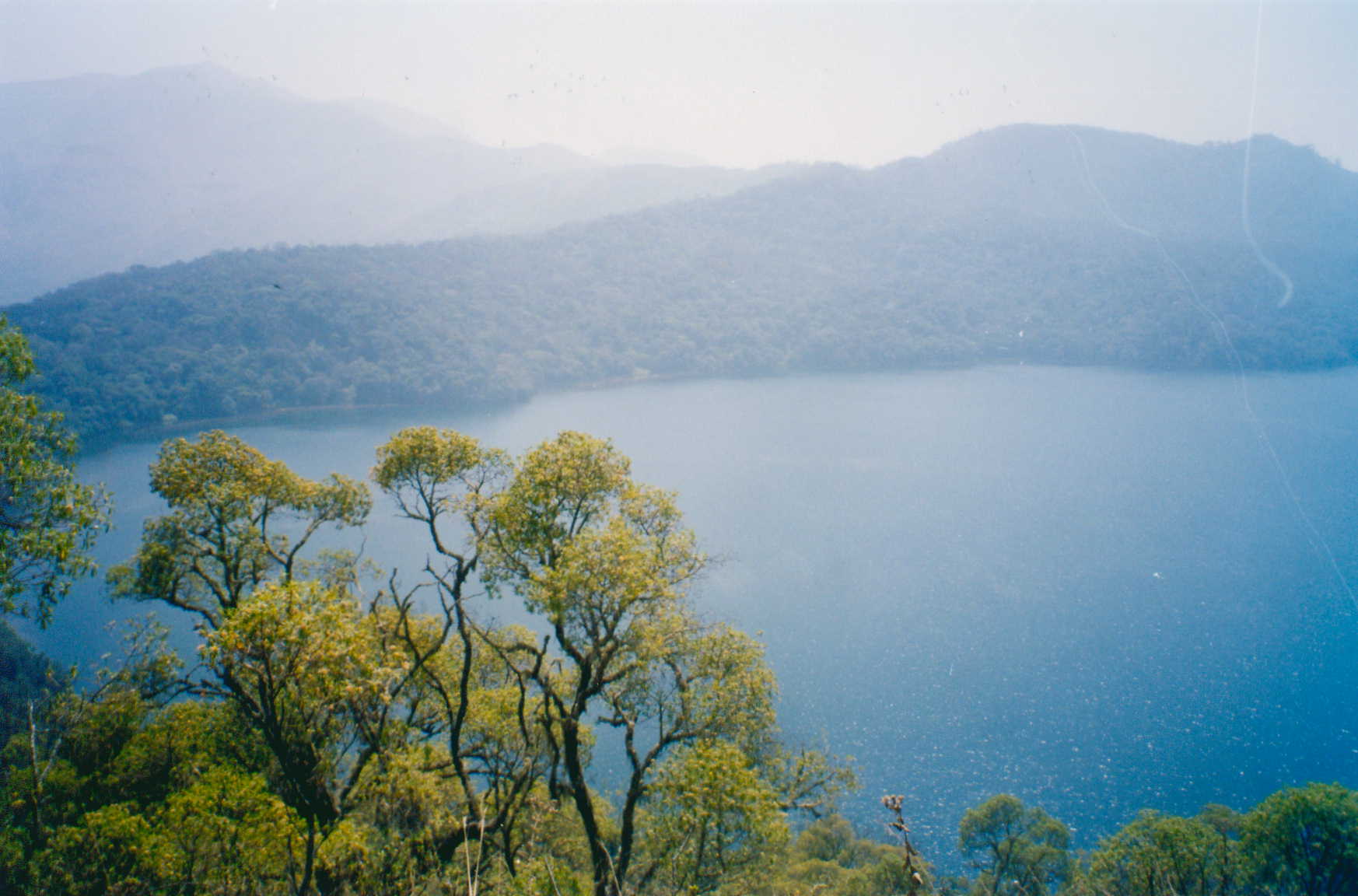
Lake Oku, Cameroon
Our daily trips around the World take us today to discover the Baka people, an ethnic group inhabiting the southeastern rainforests of Cameroon. They will enchant you with their way of singing.
Music and dance is an integral part of Baka culture. All important rituals are accompanied by music and dances and every part of the forest has its own particular type of dance and music usually performed by dancers who have undergone specific initiation rites.
For the Baka, hunting is one of the most important activities, not only for its role in providing food but above all for the symbolic meanings and the prestige traditionally attached to it. Music is present from healing to initiation rituals, from traditional tales to group games like water drums, from hunting propitiating songs to entertainment moments.
Not only is every basic moment in a Baka's life marked from birth till death by rituals where music and dance play an irreplaceable role, but daily life itself is often accompanied by musical events and attitudes.
Loni, the woman who is heard singing at the top of the track, is singing yelli, a song sung by Baka women early in the morning. The women get together before dawn to sing, enchant the animals of the forest and ensure that the men's hunting will be successful. Song and dance are used by the Baka for healing, for rituals, for keeping the community together and also for pure fun. Munduslingua hopes you enjoy today this beautiful interpretation from the Baka people in Cameroon.
Music and dance is an integral part of Baka culture. All important rituals are accompanied by music and dances and every part of the forest has its own particular type of dance and music usually performed by dancers who have undergone specific initiation rites.
For the Baka, hunting is one of the most important activities, not only for its role in providing food but above all for the symbolic meanings and the prestige traditionally attached to it. Music is present from healing to initiation rituals, from traditional tales to group games like water drums, from hunting propitiating songs to entertainment moments.
Not only is every basic moment in a Baka's life marked from birth till death by rituals where music and dance play an irreplaceable role, but daily life itself is often accompanied by musical events and attitudes.
Loni, the woman who is heard singing at the top of the track, is singing yelli, a song sung by Baka women early in the morning. The women get together before dawn to sing, enchant the animals of the forest and ensure that the men's hunting will be successful. Song and dance are used by the Baka for healing, for rituals, for keeping the community together and also for pure fun. Munduslingua hopes you enjoy today this beautiful interpretation from the Baka people in Cameroon.
The Baka singers
The Giant's Causeway
Northern Ireland
May 19
May 19
County Antrim
Northeast coast of Northern Ireland
Northeast coast of Northern Ireland
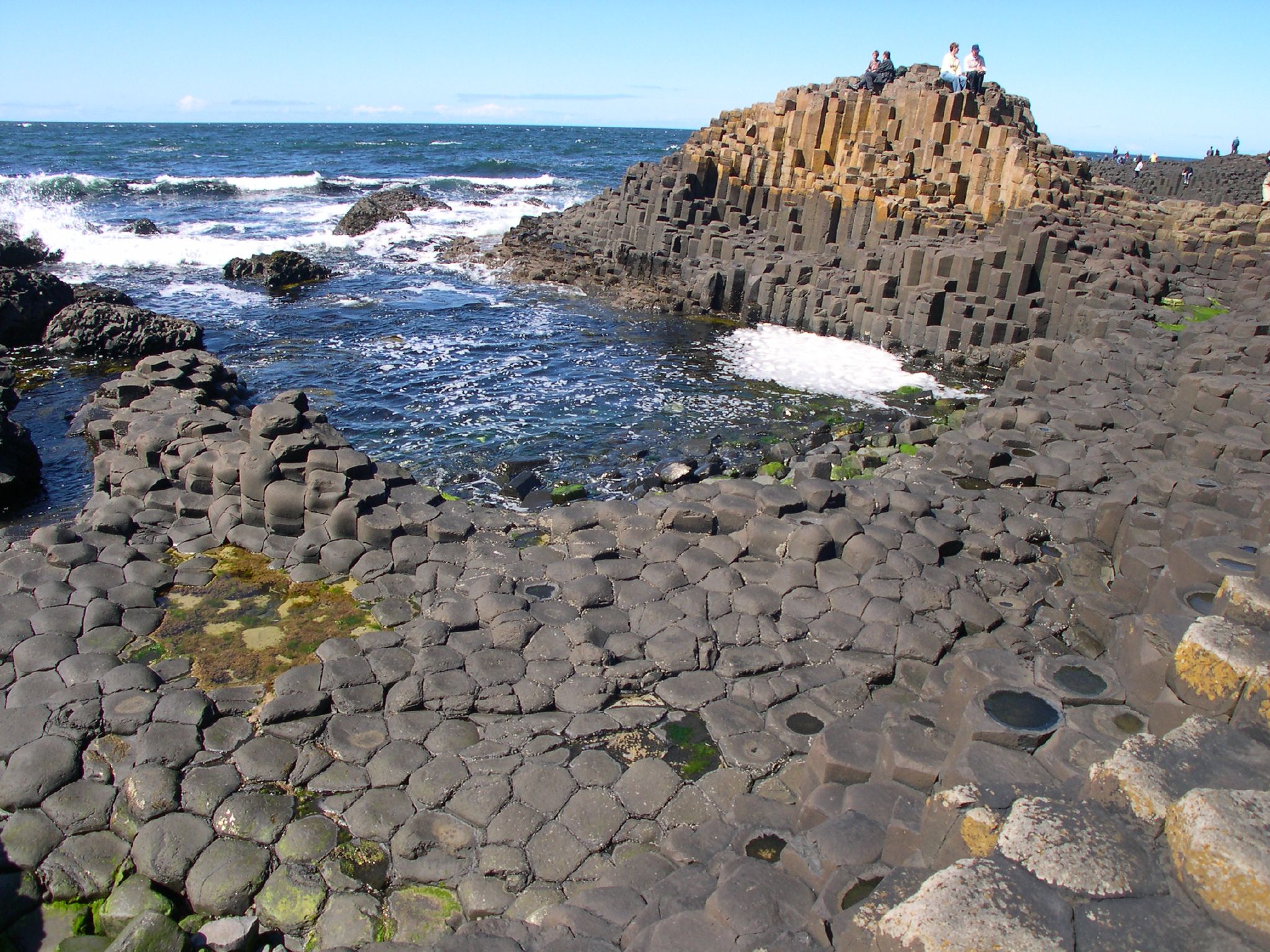
The Giant's Causeway
The Giant's Causeway, a UNESCO World Heritage Site in Northern Ireland, impresses its visitors with the shapes that lava formed millions of years ago. It is also the place where an exciting legend around these natural formations was born. Join Munduslingua on today's trip to Northern Ireland.
The Giant's Causeway is located on the North coast of Northern Ireland (about two miles north of the village of Bushmills). The place, also known as "Clochán an Aifir" or "Clochán na bhFomhórach" in Irish and "tha Giant's Causey" in Ulster-Scots, is an area of about 40,000 interlocking basalt columns (a type of dark volcanic rock) that resulted from a volcanic eruption several million of years ago.
The tops of the columns form stepping stones that lead from the cliff foot and disappear under the sea. Most of the columns are hexagonal, although there are also some with four, five, seven or eight sides. The tallest are about 12 meters (39 ft) high, and the solidified lava in the cliffs is 28 meters thick in places.
Apart from the scientific explanation to these outstanding formations, there are those who prefer a more colorful story. The popular legend tells that Fionn mac Cumhaill (Finn McCool in English), the mythical hunter-warrior of Irish mythology, built the causeway (a raised road or path across water or wet ground) to fight his adversary, the Scottish giant by the name of Benandonner.
Finn fell asleep before going across to Scotland and woke up to find the Scottish giant appearing on the horizon. Finn realized Benandonner was much bigger than himself and ran to his wife Oonagh wondering what he should do. Oonagh disguised Finn as a baby and made him curl up in an enormous cradle. Benandonner saw the huge 'child' in the cradle and began to wonder what size his father would be. Terrified by this thought, Benandonner returned to Scotland and destroyed the Causeway as he returned home.
The legend corresponds with geological history inasmuch as there are similar basalt formations, a part of the same ancient lava flow, at the site of Fingal's Cave on the isle of Staffa in Scotland.
The Giant's Causeway is located on the North coast of Northern Ireland (about two miles north of the village of Bushmills). The place, also known as "Clochán an Aifir" or "Clochán na bhFomhórach" in Irish and "tha Giant's Causey" in Ulster-Scots, is an area of about 40,000 interlocking basalt columns (a type of dark volcanic rock) that resulted from a volcanic eruption several million of years ago.
The tops of the columns form stepping stones that lead from the cliff foot and disappear under the sea. Most of the columns are hexagonal, although there are also some with four, five, seven or eight sides. The tallest are about 12 meters (39 ft) high, and the solidified lava in the cliffs is 28 meters thick in places.
Apart from the scientific explanation to these outstanding formations, there are those who prefer a more colorful story. The popular legend tells that Fionn mac Cumhaill (Finn McCool in English), the mythical hunter-warrior of Irish mythology, built the causeway (a raised road or path across water or wet ground) to fight his adversary, the Scottish giant by the name of Benandonner.
Finn fell asleep before going across to Scotland and woke up to find the Scottish giant appearing on the horizon. Finn realized Benandonner was much bigger than himself and ran to his wife Oonagh wondering what he should do. Oonagh disguised Finn as a baby and made him curl up in an enormous cradle. Benandonner saw the huge 'child' in the cradle and began to wonder what size his father would be. Terrified by this thought, Benandonner returned to Scotland and destroyed the Causeway as he returned home.
The legend corresponds with geological history inasmuch as there are similar basalt formations, a part of the same ancient lava flow, at the site of Fingal's Cave on the isle of Staffa in Scotland.
Discovering The Giant's Causeway
Battle of Las Piedras
Uruguay
May 18
May 18
Nationwide
Local communities
Local communities
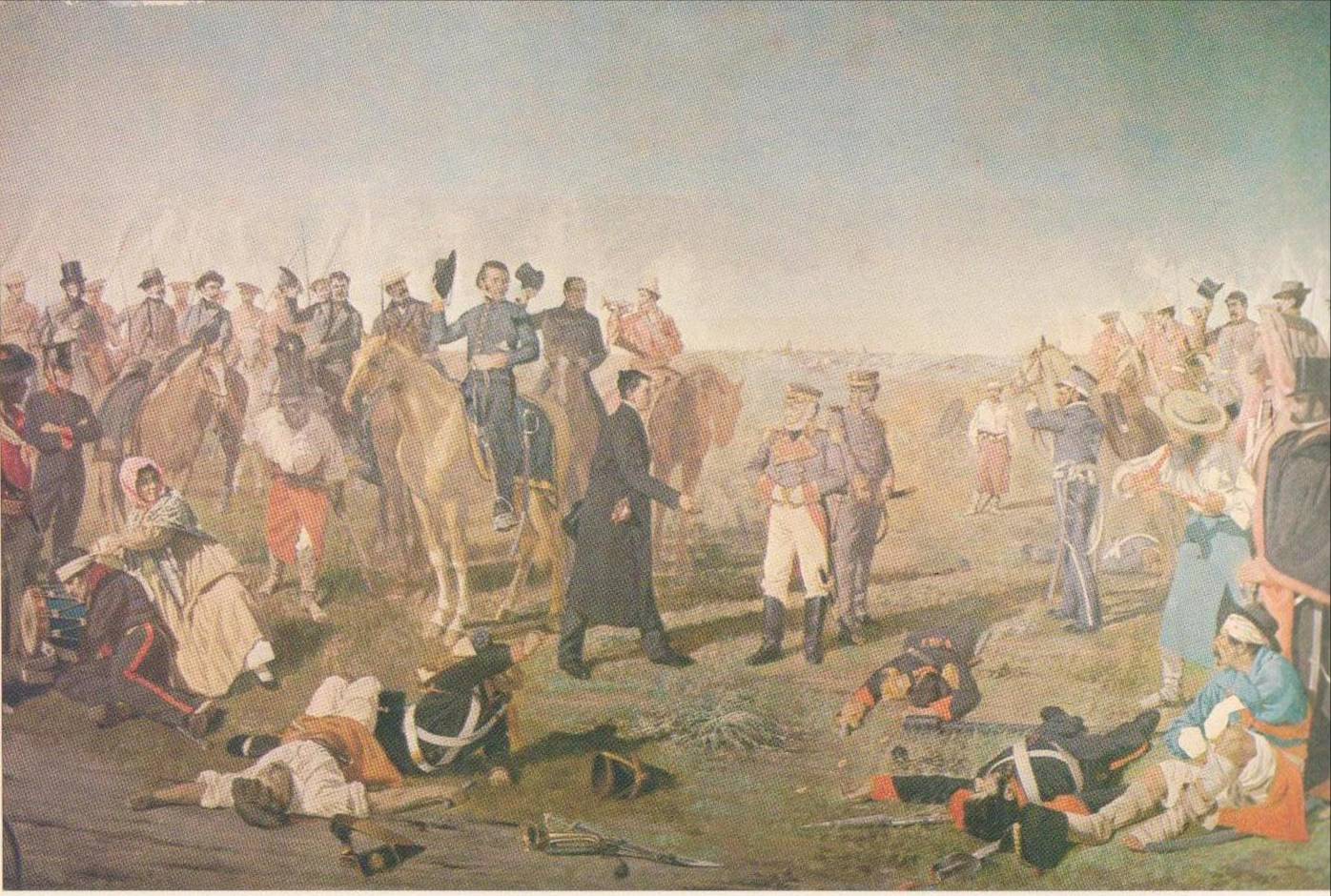
'La Acción de Gracias de Las Piedras' by Juan Manuel Blanes (1830-1901)
May 18 is an official holiday to remember an important date in the history of Uruguay: the Battle of las Piedras (Spanish: Batalla de las Piedras). The battle, fought on 18 May 1811, was part of the struggle of modern-day Argentina and Uruguay for independence from Spain.
Galician Literature Day
Spain
May 17
May 17
Galicia
Local communities
Local communities
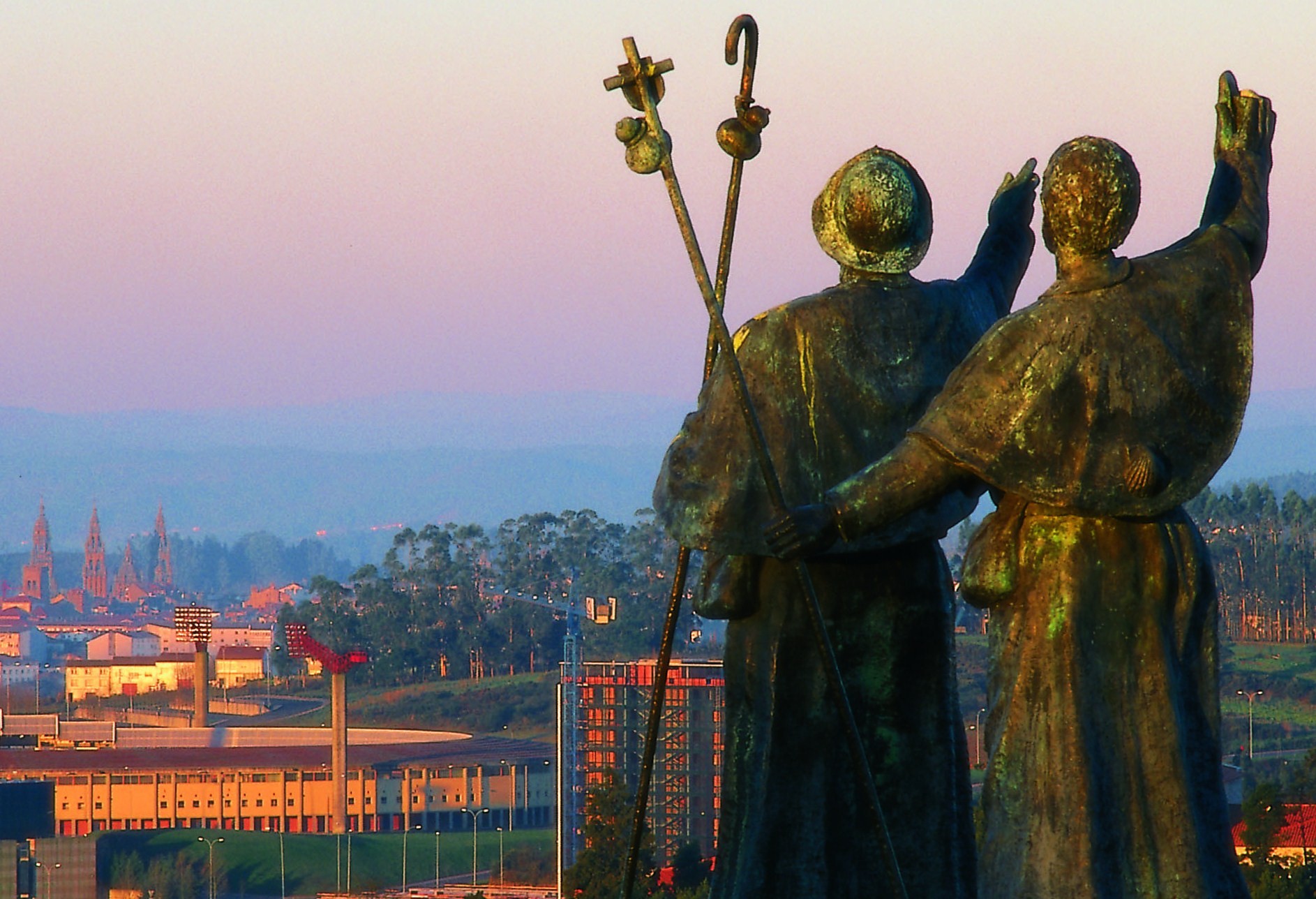
Galicia and the Way of St. James
Galicia, Spain's Northwestern region, observes annually on May 17 the Galician Literature Day (Galician: Día das Letras). This public holiday was introduced in 1963 by the Royal Galician Academy to celebrate the Galician language and literature. During its first edition in 1963, the holiday commemorated the first 100 years of the poetic work "Cantares Gallegos", the first great work to be published in the Galician language by Rosalía de Castro (1837–1885).
Since 1963, each Galician Literature Day has been dedicated to a different writer in the Galician language. Today, the 50th edition of the "Día das Letras", is being celebrated extensively and Munduslingua joins the celebrations.
Since 1963, each Galician Literature Day has been dedicated to a different writer in the Galician language. Today, the 50th edition of the "Día das Letras", is being celebrated extensively and Munduslingua joins the celebrations.
Enjoying the beauty of the Galician language (Galego)
South Sudan National Day
South Sudan
May 16
May 16
Nationwide
Local communities
Local communities

National Day celebrations
May 16 is a National Day in South Sudan to celebrate the country's nationhood. This day, quoting Salva Kiir Mayardit, the first president of South Sudan since its independence from Sudan on 9 July 2011, "aims to keep alive the memory of those great sacrifices by our people and fallen heroes and to acknowledge the tremendous contribution made by our gallant SPLA forces [Sudan People's Liberation Army] in the marginalized areas of Sudan." On May 16 learn more about the people of this new nation, their prospects for the future and the hope to build a better place to live.
History, facts and investment opportunities in South Sudan
Aoi Matsuri
Japan
May 15
May 15
Kyoto
Streets and Shinto shrines
Streets and Shinto shrines
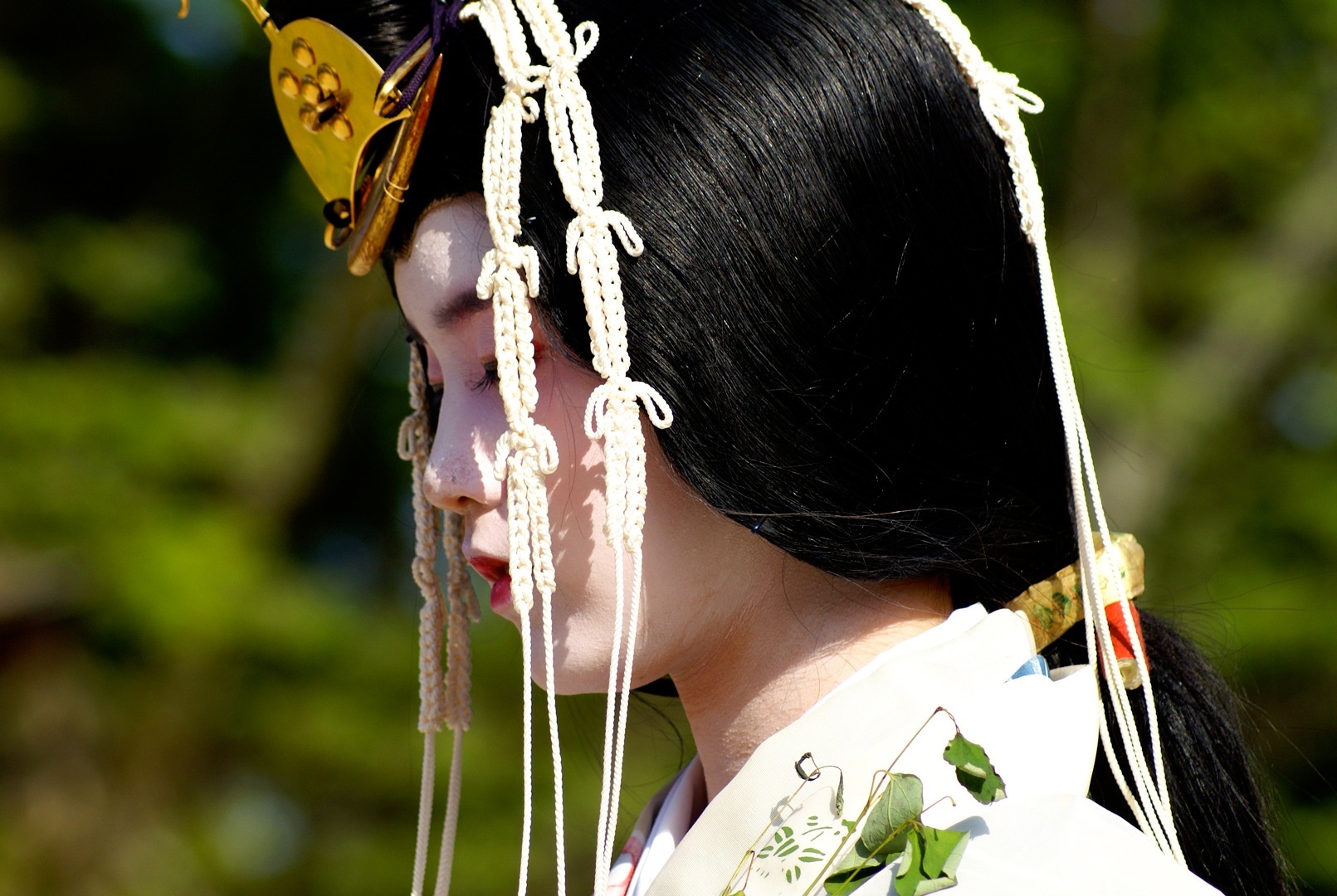
The year's Saio in traditional Japanese dress
In Kyoto, Japan, one of the most famous festivals is held every year on May 15. The "Aoi Matsuri" (Japanese: 葵祭) or "Hollyhock Festival" is celebrated in Kyoto as a continuation of an old Japanese tradition.
The Aoi Matsuri derives its name from the hollyhock leaves used as decoration throughout the festival. The history of the Aoi Matsuri dates back to the times of Emperor Kinmei (reigned CE 539 - 571) when a series of disastrous rains with high winds ruined the grain crops and epidemics spread throughout the country.
Since it was believed at the time that these were punishments by the deities, the Emperor decided to send his messenger along with a group of people to the deities' shrines and conduct various acts in an attempt to calm the gods. The acts were done in prayer for a bountiful harvest and included a procession to the shrines as well as riding a galloping horse.
Nowadays the tradition persists and is part of Kyoto's most famous events. Today both locals and tourists gather to watch the colorful parades, traditional Japanese clothing, giant flower bouquets, beautifully ornamented carts drawn by oxes and the procession of women in kimono accompanying the year's Saio (traditionally a young female part of the imperial family who performed rituals at the shrines—today an unmarried woman in Kyoto).
The Aoi Matsuri derives its name from the hollyhock leaves used as decoration throughout the festival. The history of the Aoi Matsuri dates back to the times of Emperor Kinmei (reigned CE 539 - 571) when a series of disastrous rains with high winds ruined the grain crops and epidemics spread throughout the country.
Since it was believed at the time that these were punishments by the deities, the Emperor decided to send his messenger along with a group of people to the deities' shrines and conduct various acts in an attempt to calm the gods. The acts were done in prayer for a bountiful harvest and included a procession to the shrines as well as riding a galloping horse.
Nowadays the tradition persists and is part of Kyoto's most famous events. Today both locals and tourists gather to watch the colorful parades, traditional Japanese clothing, giant flower bouquets, beautifully ornamented carts drawn by oxes and the procession of women in kimono accompanying the year's Saio (traditionally a young female part of the imperial family who performed rituals at the shrines—today an unmarried woman in Kyoto).
Kyoto Aoi Matsuri Festival
National Unification Day
Liberia
May 14
May 14
Nationwide
Local communities
Local communities

Liberian girl
Liberia celebrates on this day a public holiday known as the National Unification Day. The holiday, celebrated every year on May 14, signifies and commemorates the first concrete action taken by the leaders of Liberia to start the process of unifying the 2 groups of people, the Americo-Liberian elite (the colonists) and the indigenous majority, which had experienced a great division since the existence of Liberia as a nation.
This holiday has its roots when President William Tubman, who led the country from 1944 to 1971, launched a unification program and had it commemorate annually through the National Unification Day. This day is of great importance for Liberians for being a reminder of the many conflicts in the past that division brought. On this day Munduslingua invites you to watch a report on the country's future and development after the many years of division.
This holiday has its roots when President William Tubman, who led the country from 1944 to 1971, launched a unification program and had it commemorate annually through the National Unification Day. This day is of great importance for Liberians for being a reminder of the many conflicts in the past that division brought. On this day Munduslingua invites you to watch a report on the country's future and development after the many years of division.
Liberia's future and development report
Rotuma Day
Fiji
May 13
May 13
Rotuma Island
Communities of Rotuman people on the island and abroad
Communities of Rotuman people on the island and abroad
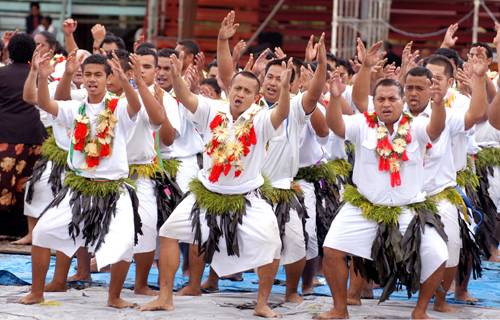
Rotumans at Ratu Cakobau Park
The Rotuma people of Fiji celebrate annually on May 13 "Rotuma Day". This day falls on the historic date when the island of Rotuma, today a dependency within the Republic of Fiji, was ceded to the United Kingdom in 1881.
Rotuma Day celebrations are full of events that promote the culture of the Rotumans and include traditional dances and sport activities. During Rotuma Day discover the Rotuman people, their origins, culture and language.
Rotuma is a small island, approximately 650 km. north of Fiji. The island and its nearby islets are a Fijean dependency since 1881 when the island was ceded to the United Kingdom. The Rotuman people constitute a minority within the Republic of Fiji, with a culture that resembles more that of other Polynesian islands such as Tonga, Samoa, Futuna and Uvea.
Rotuma Day celebrations generally consist of sporting contests, card playing, feasting and traditional dancing. The day is not only celebrated in Fiji but also within the Rotuman communities in New Zealand, Australia and the United States.
Rotuma Day celebrations are full of events that promote the culture of the Rotumans and include traditional dances and sport activities. During Rotuma Day discover the Rotuman people, their origins, culture and language.
Rotuma is a small island, approximately 650 km. north of Fiji. The island and its nearby islets are a Fijean dependency since 1881 when the island was ceded to the United Kingdom. The Rotuman people constitute a minority within the Republic of Fiji, with a culture that resembles more that of other Polynesian islands such as Tonga, Samoa, Futuna and Uvea.
Rotuma Day celebrations generally consist of sporting contests, card playing, feasting and traditional dancing. The day is not only celebrated in Fiji but also within the Rotuman communities in New Zealand, Australia and the United States.
The language and culture of the Rotuman people
Finnishness
Finland
May 12
May 12
Nationwide
Local communities
Local communities
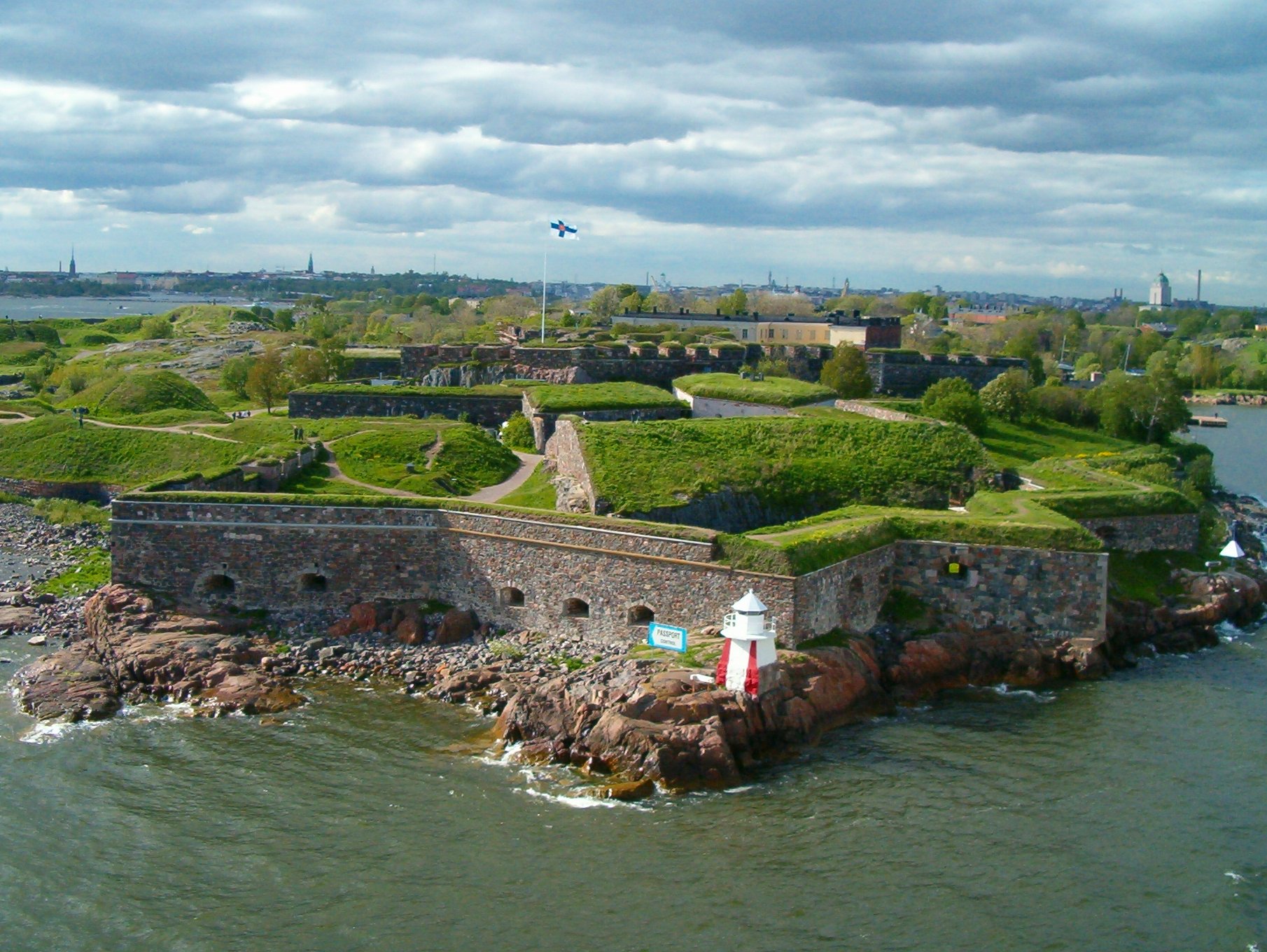
Suomenlinna Sea Fortress
Finland celebrates a date known as Finnishness (Finnish: Suomalaisuuden Päivä), a day dedicated to the Finnish indentity and language. The date for this holiday falls on May 12, the birthday of Finnish statesman, journalist and philosopher Johan Vilhelm Snellman (12 May 1806 - 4 July 1881) who was one of Finland's most influential figures during the 19th century.
During his life Snellman pushed forward social programs to make Finnish the spoken language of the educated classes, create Finnish literature and improve the education system in schools. His contributions set the path to have Finnish be recognized as the official language of the Finns.
During his life Snellman pushed forward social programs to make Finnish the spoken language of the educated classes, create Finnish literature and improve the education system in schools. His contributions set the path to have Finnish be recognized as the official language of the Finns.
Nisga'a Day
Canada
May 11
May 11
Nationwide
Nisga'a communities
Nisga'a communities
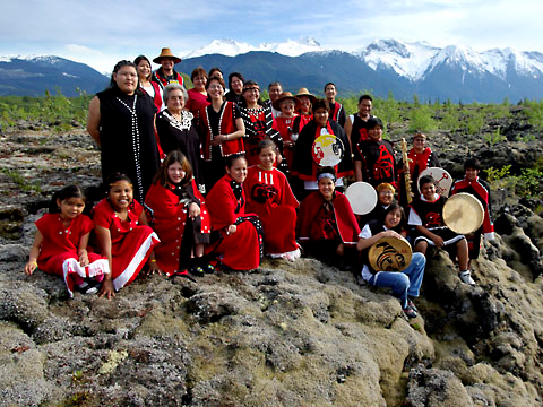
Nisga'a Spirit Lava Dancers
The Nisga'a people of Canada commemorate today the 12th anniversary of a treaty known as the Nisga'a Final Agreement. This date, aka Nisga'a Day, celebrates the day when the treaty came into effect after years of negotiations between the Canadian government and the Nisga'a people.
Ever since this important event took place, the Nisga'a people have witnessed among other things the transfer of nearly 2,000 square kilometers of Crown land to the Nisga'a Nation, the creation of Bear Glacier Provincial Park and the establishment of a 300,000 cubic decameter water reservation. Canada, British Columbia and the Nisga'a Nation are continuing to implement the Nisga'a Final Agreement, guided by an Implementation Plan and the tripartite Implementation Committee.
Ever since this important event took place, the Nisga'a people have witnessed among other things the transfer of nearly 2,000 square kilometers of Crown land to the Nisga'a Nation, the creation of Bear Glacier Provincial Park and the establishment of a 300,000 cubic decameter water reservation. Canada, British Columbia and the Nisga'a Nation are continuing to implement the Nisga'a Final Agreement, guided by an Implementation Plan and the tripartite Implementation Committee.
Reflections during Nisga'a Day
Constitution Day
Nationwide
Local communities
Local communities
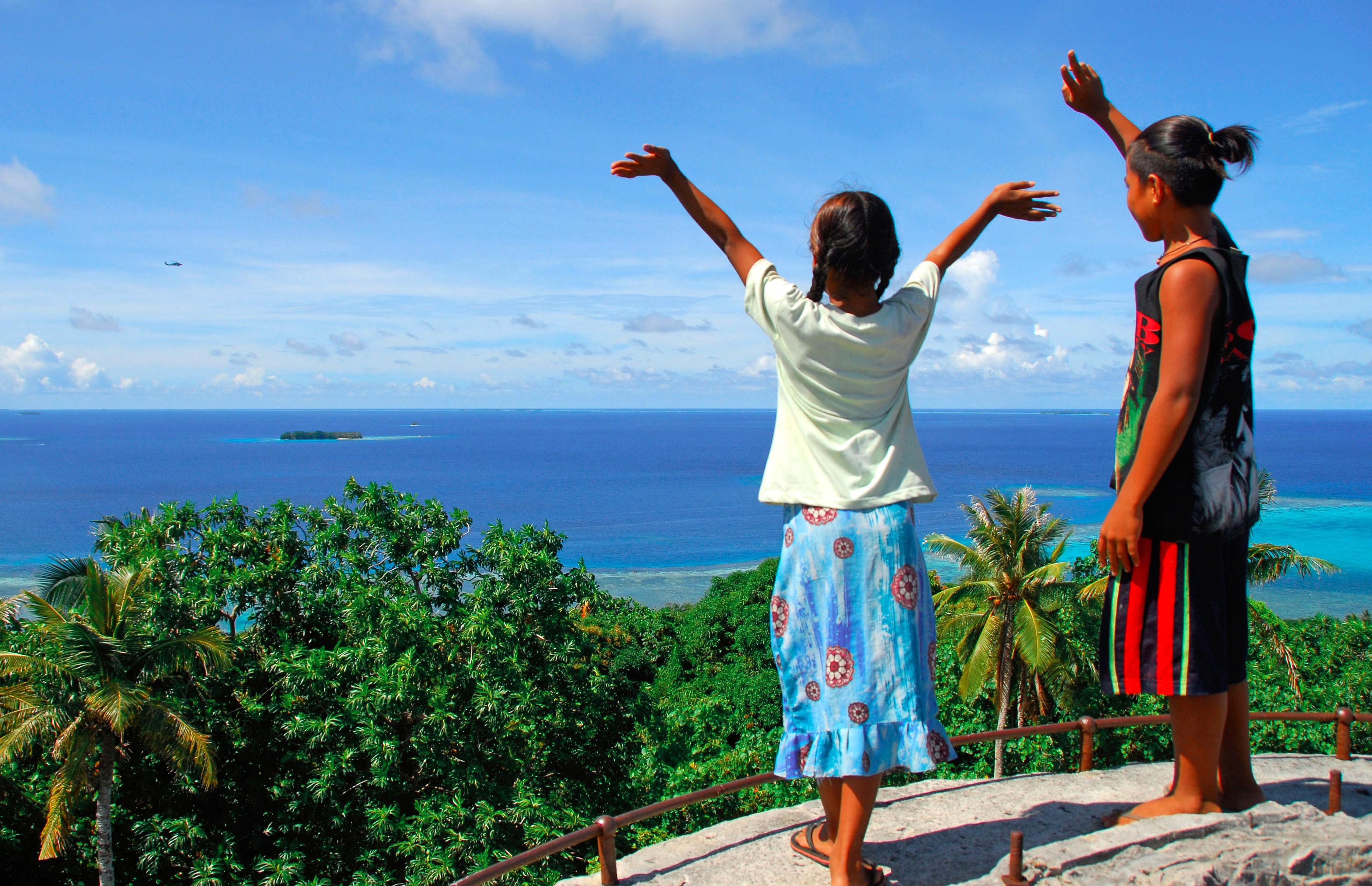
Children and the ocean in the Federated States of Micronesia
The Federated States of Micronesia (FSM), an independent, sovereign island nation in the Western Pacific Ocean, commemorates on May 10 the establishment of its own constitutional government. It was on 10 May 1979 that a group of simple men pledged to be bound by the principles of democracy enshrined in the Constitution of the Federated States of Micronesia, thus creating a sovereign nation. Ever since, Constitution Day is celebrated on May 10.
Romania's Declaration of Independence
Romania
May 9
May 9
Nationwide
Local communities
Local communities
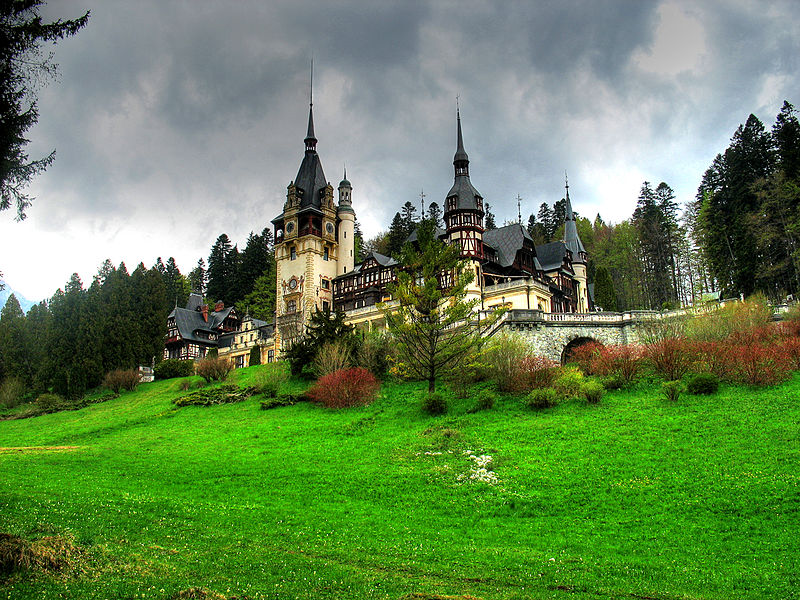
Peleș Castle, Romania
Romania celebrates on May 9 its Declaration of Independence from the Ottoman Empire in 1877, an important date in Romanian history and an opportunity for you to explore yet another beautiful place, Peleș Castle.
A photo journey to Peleș Castle
Bulgaria Radio Day
Bulgaria
May 7
May 7
Nationwide
Local communities
Local communities
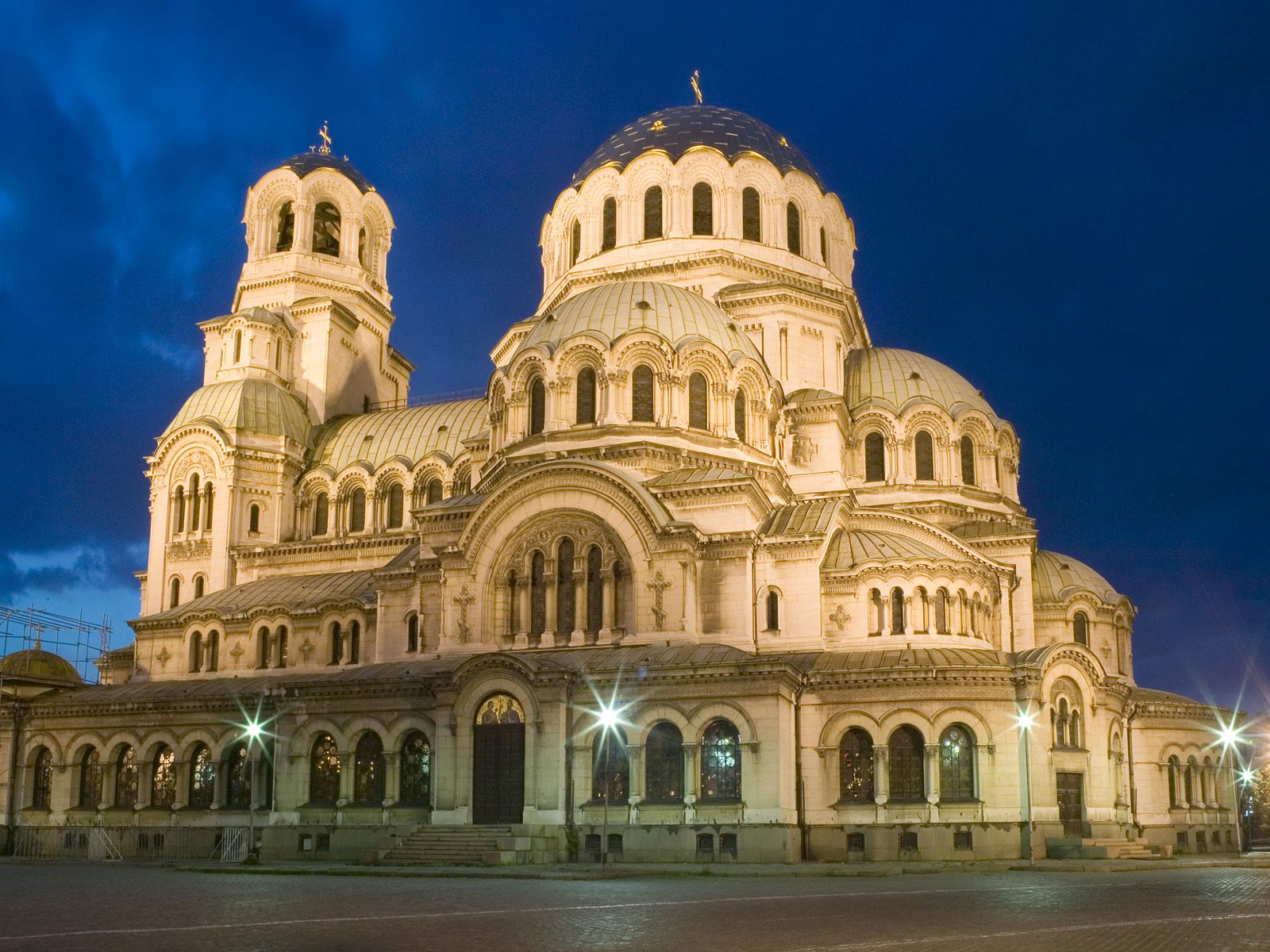
Alexander Nevsky Cathedral in Sofia, Bulgaria's capital city
May 7 is known in Bulgaria and Russia as "Radio Day", a date to remember the developments made by Alexander Popov (Russian physicist) in 1895. 120 years ago on this day, Popov demonstrated how it was possible to transmit and receive short, continuous signals over a distance up to 64 meters by means of electromagnetic waves. The findings were an important contribution to the development of wireless communications.
Hıdırellez
Turkey
May 6
May 6
Nationwide
Streets, parks, forests and country houses
Streets, parks, forests and country houses
Musicians playing during Hıdırellez
May 6 is "Hıdırellez", a festival that celebrates the arrival of spring. On this day Munduslingua invites you to discover the Hıdırellez, its traditions and festive parades.
The arrival of the spring, which denotes the revival of nature and its coming back to life, has been throughout history an important event in the life of human beings. Hıdırellez, which celebrates precisely this time of the year, has generally been celebrated on May 6. In some regions, however, May 5 has been accepted as the day of the festival and May 6 as the day of Hıdırellez.
Hıdırellez begins in the morning when Turks generally pray. After prayers are done, Turks take lamb and leave for the park, the forest or even their country houses. There, men cook the meat outdoors and women set the table while children play around. Once the meal is over, the fun begins: young people play, girls tell fortunes and adults feast. Hıdırellez is also characterized by its festive parades and marches.
The arrival of the spring, which denotes the revival of nature and its coming back to life, has been throughout history an important event in the life of human beings. Hıdırellez, which celebrates precisely this time of the year, has generally been celebrated on May 6. In some regions, however, May 5 has been accepted as the day of the festival and May 6 as the day of Hıdırellez.
Hıdırellez begins in the morning when Turks generally pray. After prayers are done, Turks take lamb and leave for the park, the forest or even their country houses. There, men cook the meat outdoors and women set the table while children play around. Once the meal is over, the fun begins: young people play, girls tell fortunes and adults feast. Hıdırellez is also characterized by its festive parades and marches.
Understanding the history and traditions of Hıdırellez
Cinco de Mayo
United States
May 5
May 5
Nationwide
Streets and squares
Streets and squares
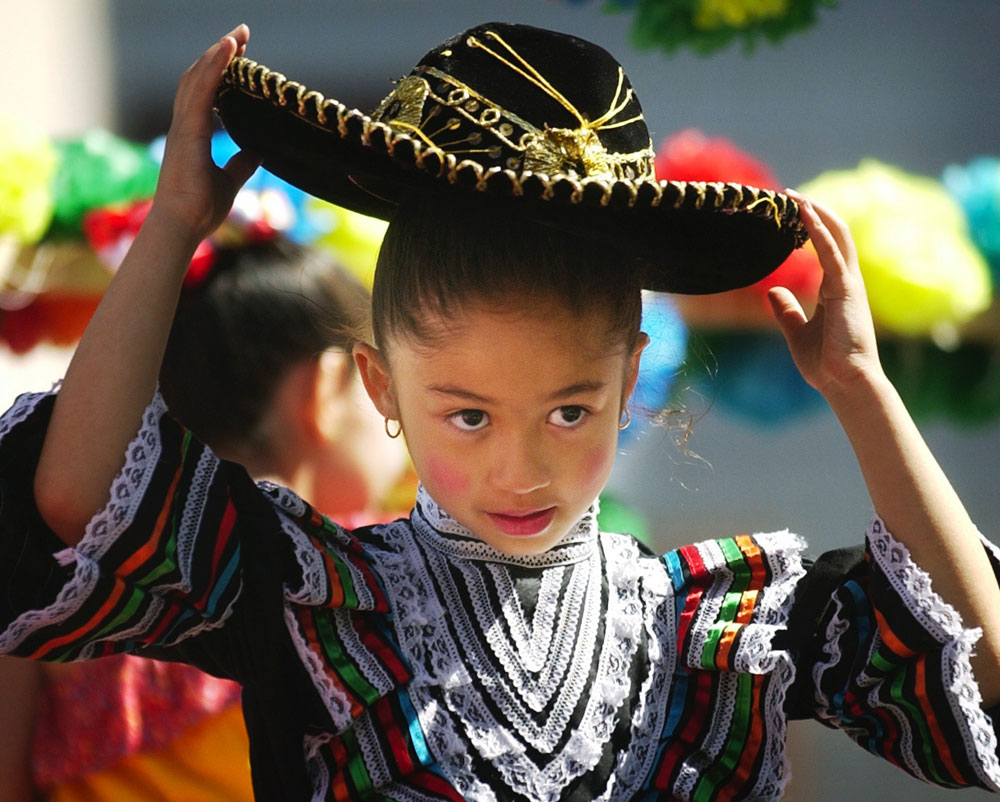
Girl during the Cinco de Mayo celebrations
May 5 is a holiday of Mexican heritage celebrated in the United States and in the Mexican state of Puebla. The holiday, known as "5 de Mayo", commemorates the day of the Battle of Puebla on May 5, 1862 when the Mexican army had its victory over the French forces that had invaded the country. The celebrations, far from the aftermath of the battle, display a much happier and positive face with music, folk dances and extensive feasts.
Cinco de Mayo's history and celebrations
Latvia Declaration of Independence
Latvia
May 4
May 4
Nationwide
Local communities
Local communities
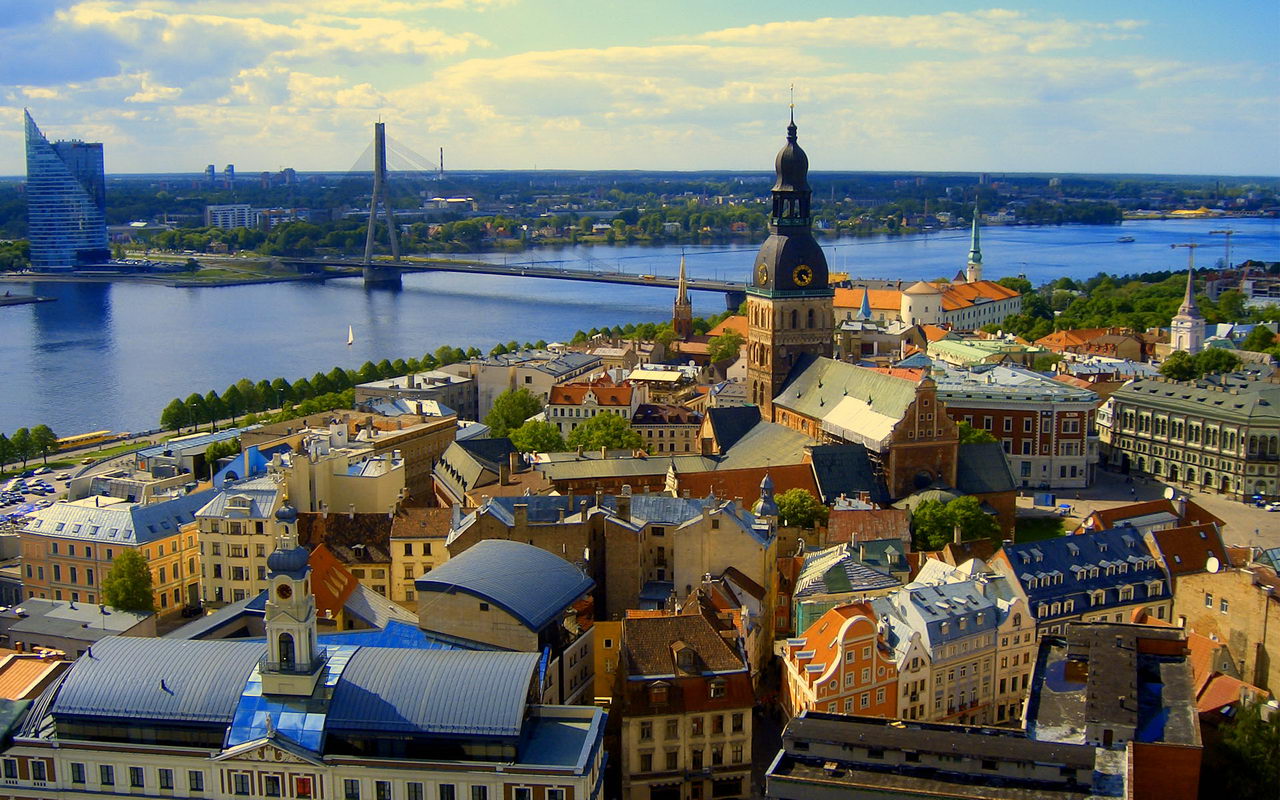
Riga, Latvia's capital city
Latvia commemorates today the adoption of its Declaration of Independence of May 4, 1990. The event is regarded by Latvians as the restoration of their sovereignty after years of Soviet control.
May 3rd Constitution Day
Poland
May 3
May 3
Nationwide
Streets and squares
Streets and squares
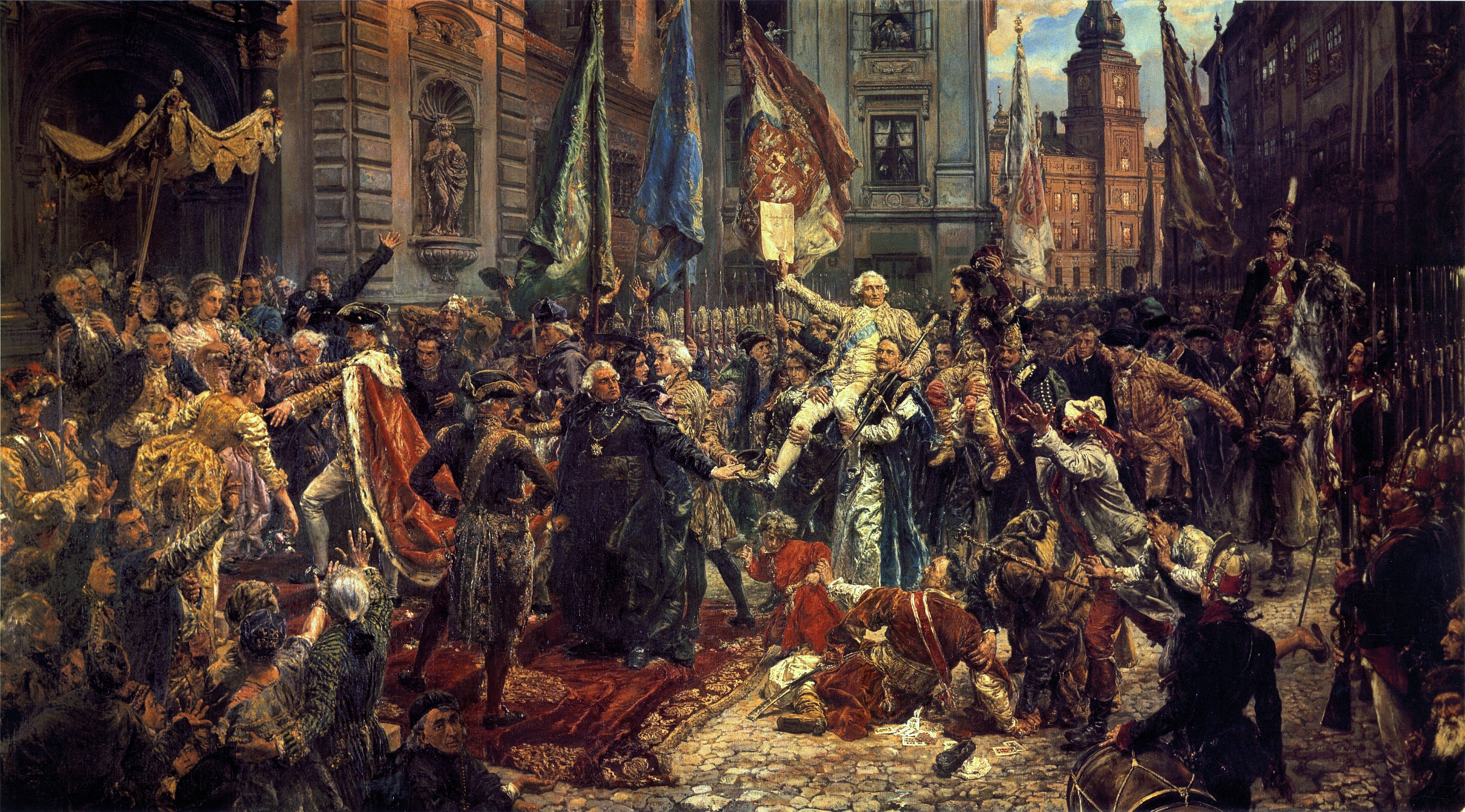
May 3 Constitution by Polish painter Jan Matejko
On May 3 Poland celebrates the adoption of their national constitution. The Constitution of May 3, 1791 is considered to be by most scholars Europe's first National Constitution and the world's second after the United States Constitution (17 September 1787).
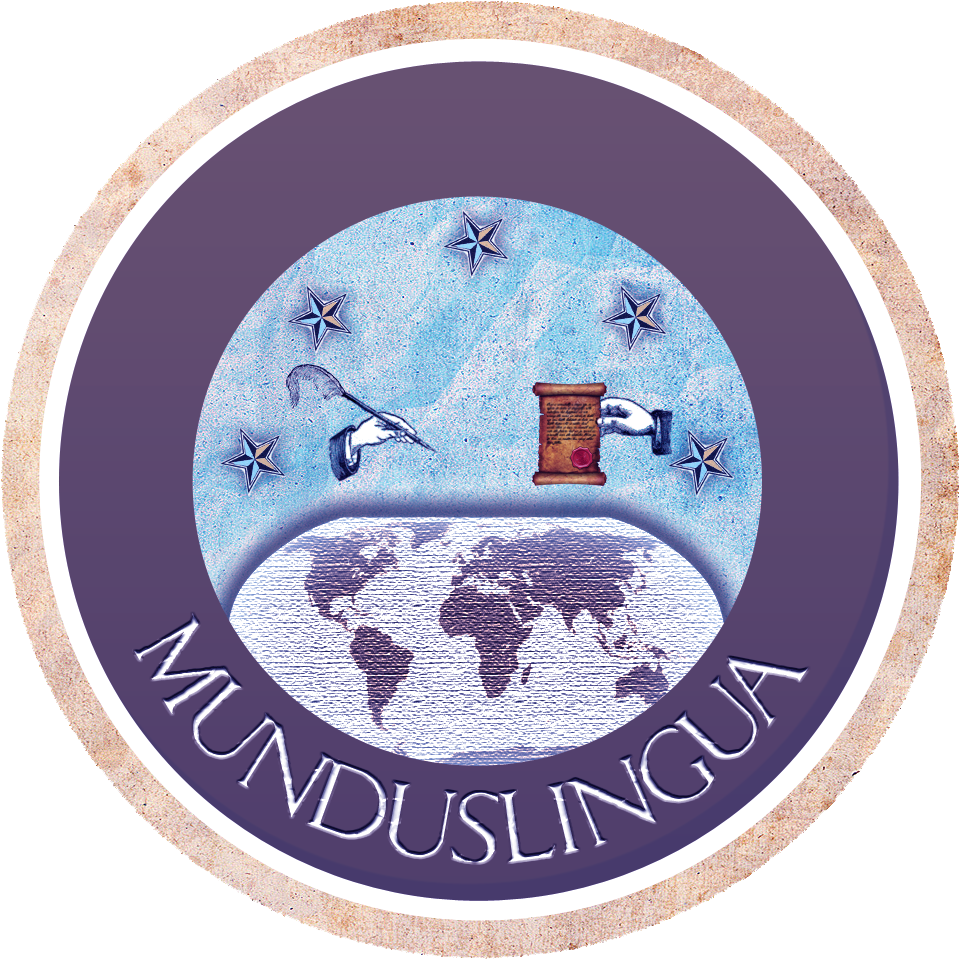

Choose your favorite channel below

Subscribe to our feeds
Read about cultural events and news in the world.
Read about cultural events and news in the world.
Enjoy our magazine on Flipboard
Best to enjoy from your mobile phone or tablet.
Best to enjoy from your mobile phone or tablet.
Enjoy our iTunes podcasts
Best for those who prefer audio.
Best for those who prefer audio.
Follow us on Twitter
Best for those who prefer Twitter.
Best for those who prefer Twitter.
Photo sources
May 3: May 3 Constitution by Polish painter Jan Matejko (1838-1893)
May 4: Riga, Latvia
May 5: Denver's Cinco de Mayo Celebrations
May 6: Hıdırellez Festival, Turkey
May 7: Alexander Nevsky Cathedral, Sofia, Bulgaria
May 9: Peleș Castle, Sinaia, Romania
May 10: Landscape in the Federated States of Micronesia
May 11: Nisga'a Spirit Lava Dancers
May 12: Suomenlinna Sea Fortress, Finland
May 13: Rotumans at Ratu Cakobau Park, Nausori, Fiji
May 14: Liberian girl
May 15: Aoi Matsuri Festival, Kyoto, Japan
May 16: Prospects for the future after the independence of the Republic of South Sudan
May 17: Galicia: the way of St. James
May 18: Painting 'La Acción de Gracias de Las Piedras' by Juan Manuel Blanes (1830-1901)
May 19: The Giant's Causeway, Northern Ireland
May 20: Lake Oku, Cameroon
May 22: Haitian art
May 23: Rose Hall Great House, Jamaica
May 24: Hamilton, Bermuda
May 25: Tango dancers
May 28: The fascinating Axum stelae field, with a huge fallen stele in the foreground
May 29: Abuja National Mosque, Nigeria
May 30: Anguilla Island Harbour
May 31: Milford Sound, Fiordland National Park, New Zealand
Background: Mike's Weblog
May 4: Riga, Latvia
May 5: Denver's Cinco de Mayo Celebrations
May 6: Hıdırellez Festival, Turkey
May 7: Alexander Nevsky Cathedral, Sofia, Bulgaria
May 9: Peleș Castle, Sinaia, Romania
May 10: Landscape in the Federated States of Micronesia
May 11: Nisga'a Spirit Lava Dancers
May 12: Suomenlinna Sea Fortress, Finland
May 13: Rotumans at Ratu Cakobau Park, Nausori, Fiji
May 14: Liberian girl
May 15: Aoi Matsuri Festival, Kyoto, Japan
May 16: Prospects for the future after the independence of the Republic of South Sudan
May 17: Galicia: the way of St. James
May 18: Painting 'La Acción de Gracias de Las Piedras' by Juan Manuel Blanes (1830-1901)
May 19: The Giant's Causeway, Northern Ireland
May 20: Lake Oku, Cameroon
May 22: Haitian art
May 23: Rose Hall Great House, Jamaica
May 24: Hamilton, Bermuda
May 25: Tango dancers
May 28: The fascinating Axum stelae field, with a huge fallen stele in the foreground
May 29: Abuja National Mosque, Nigeria
May 30: Anguilla Island Harbour
May 31: Milford Sound, Fiordland National Park, New Zealand
Background: Mike's Weblog



